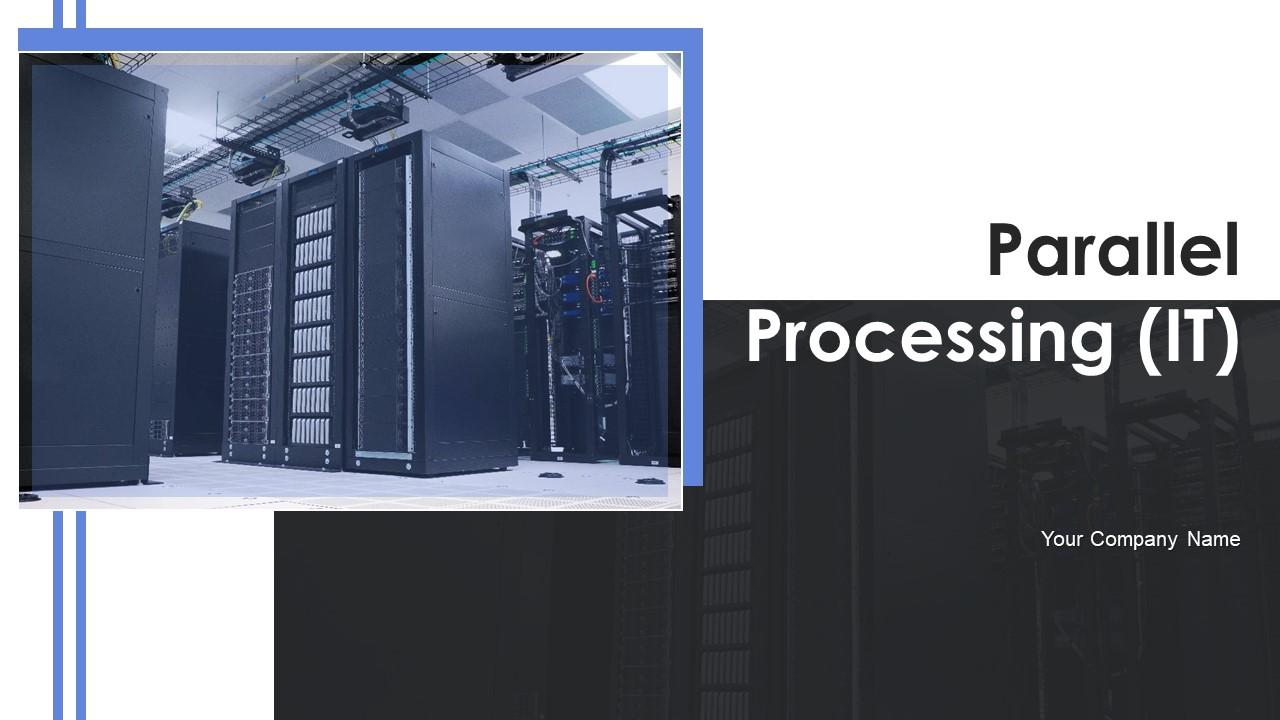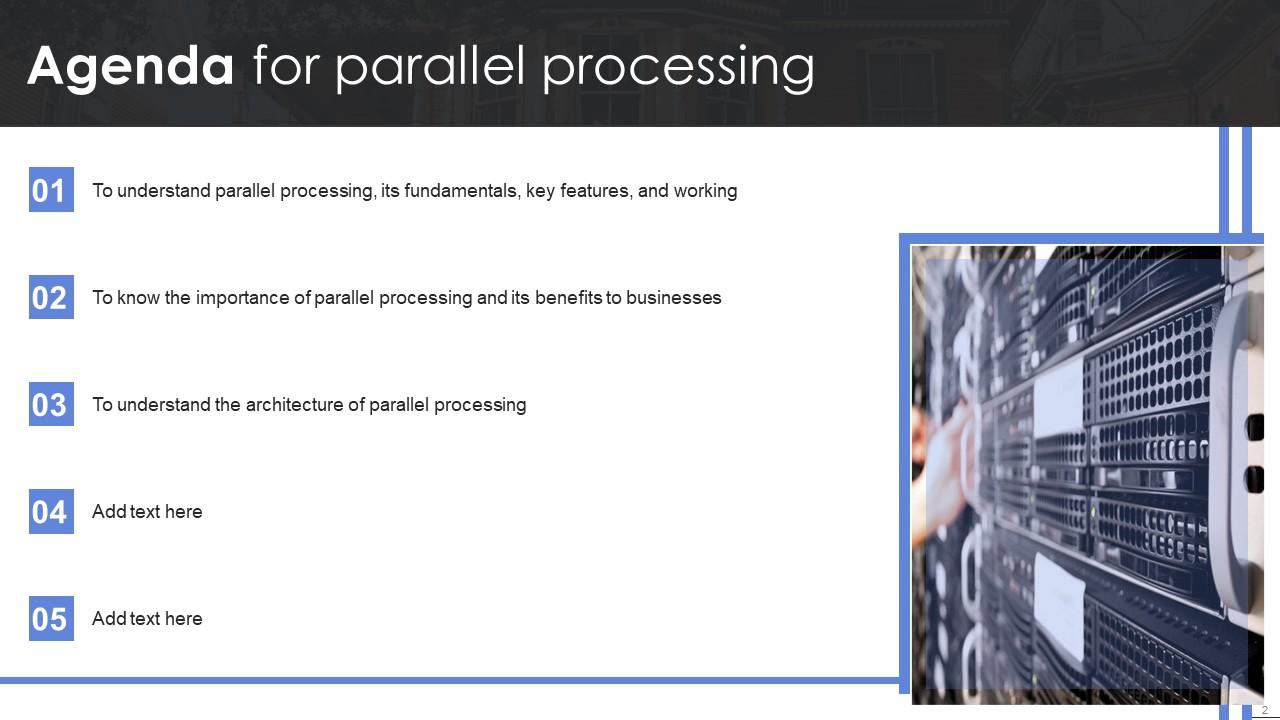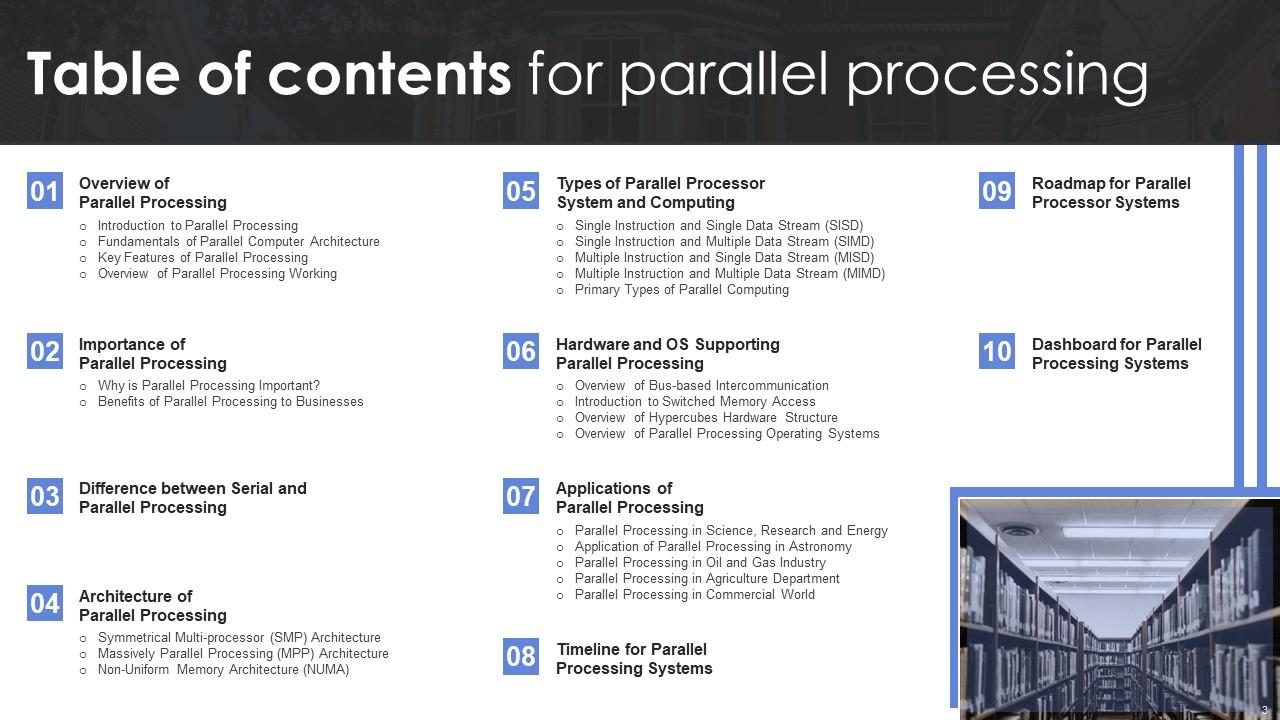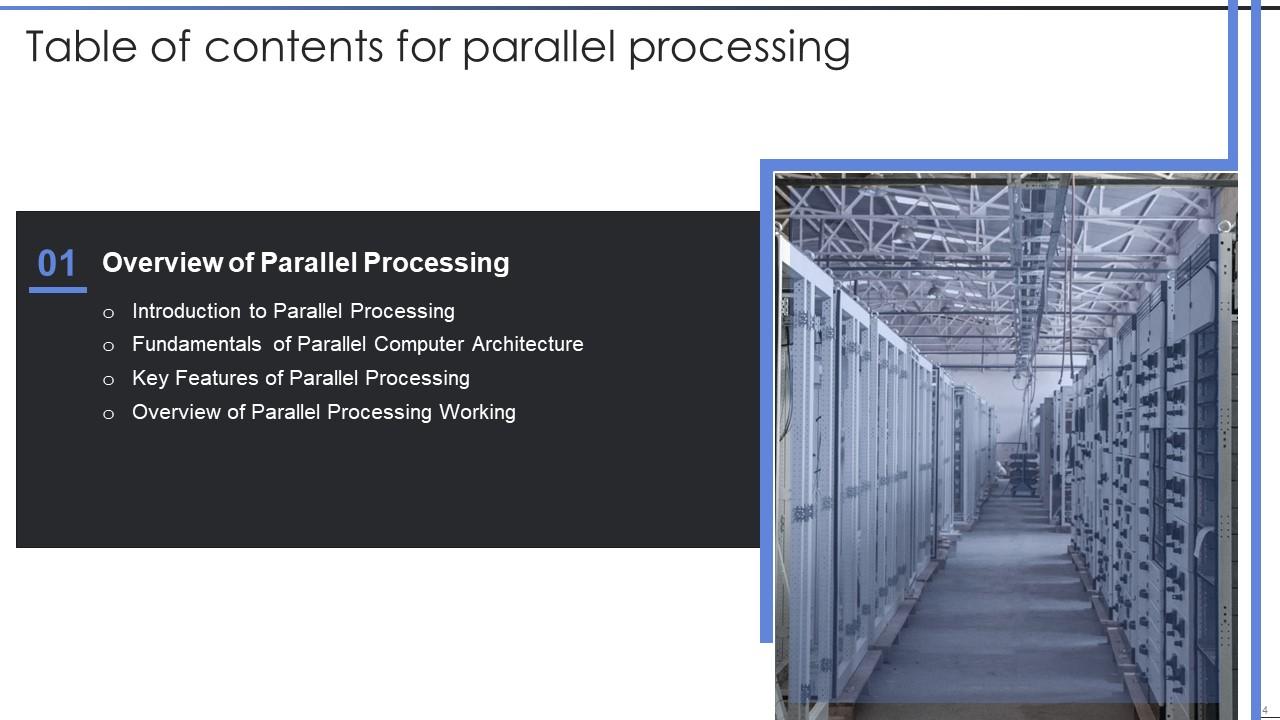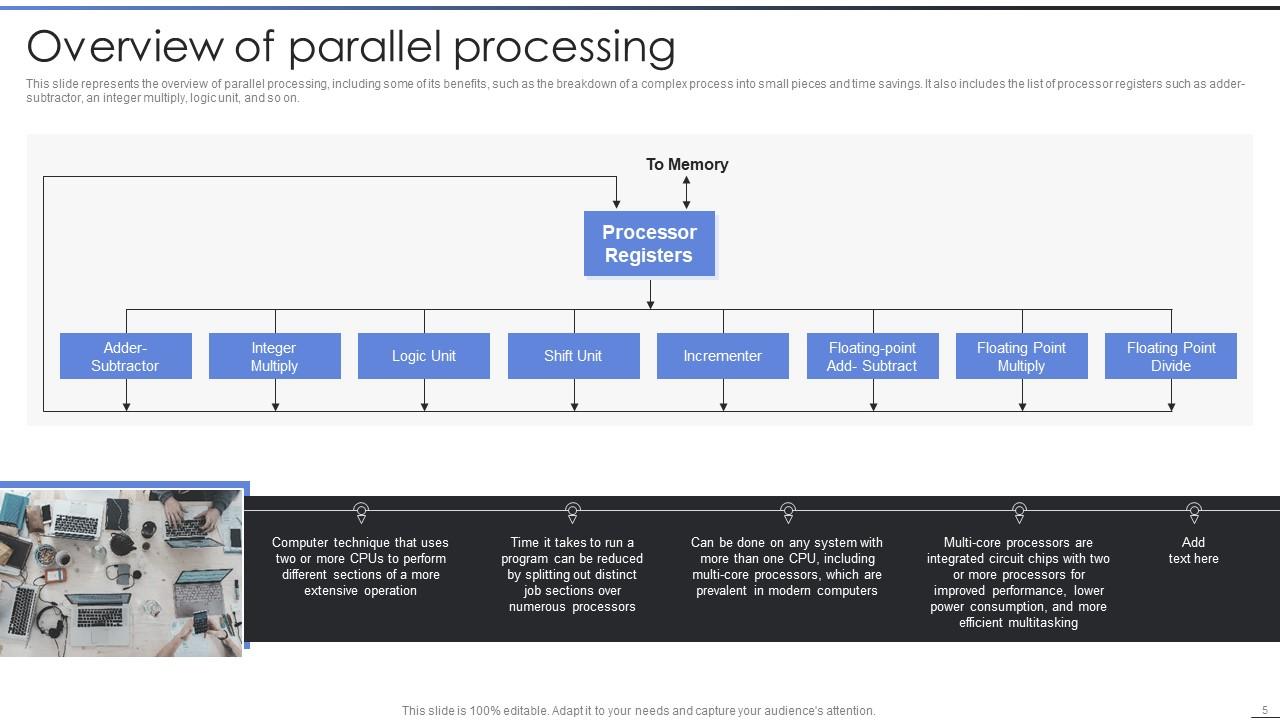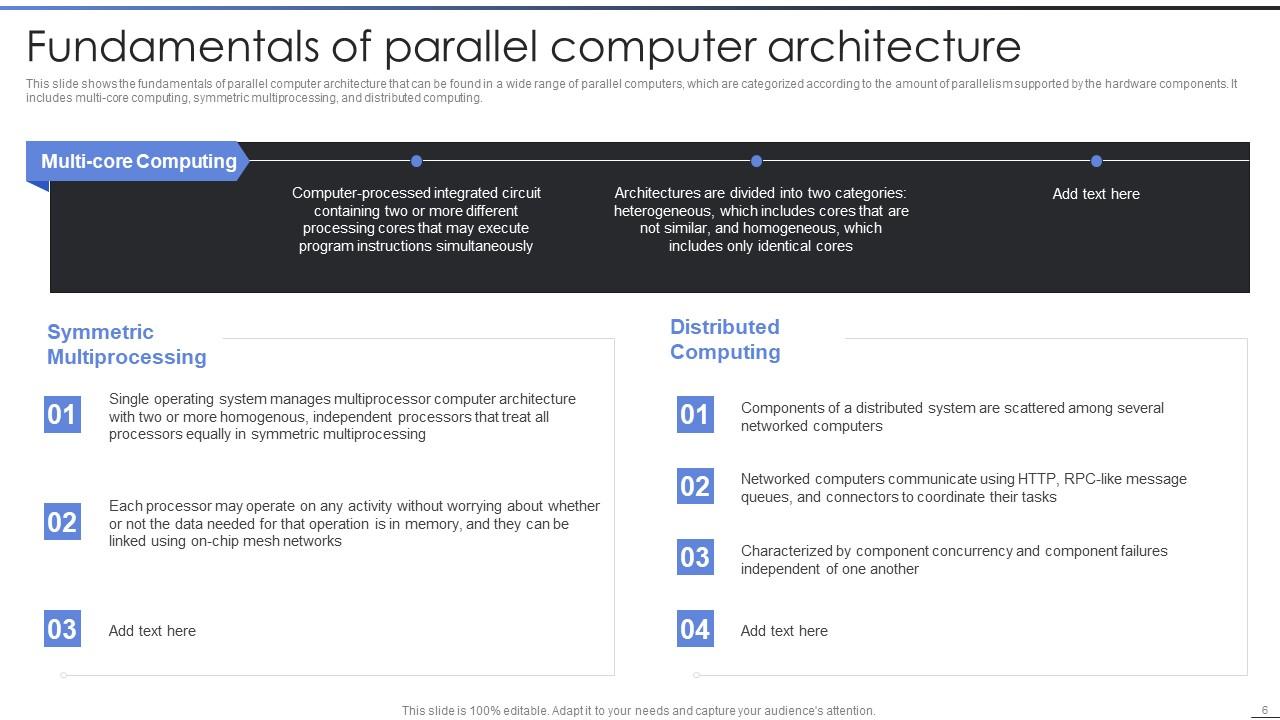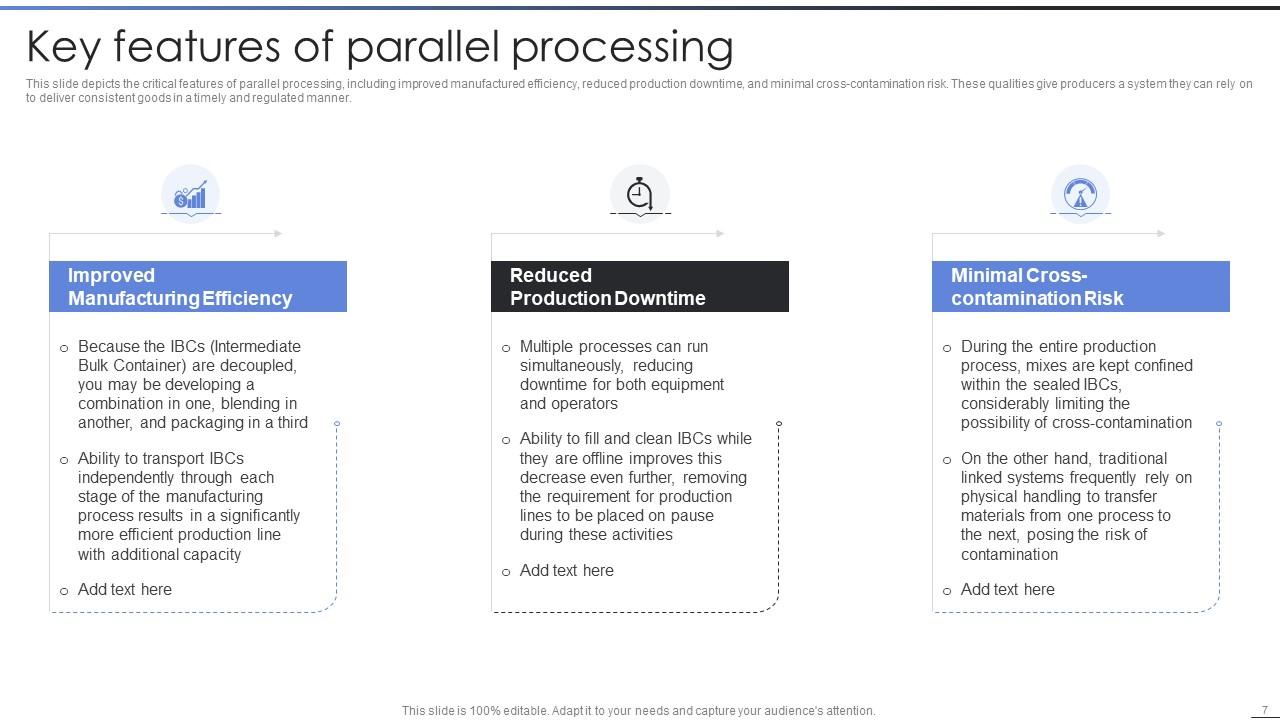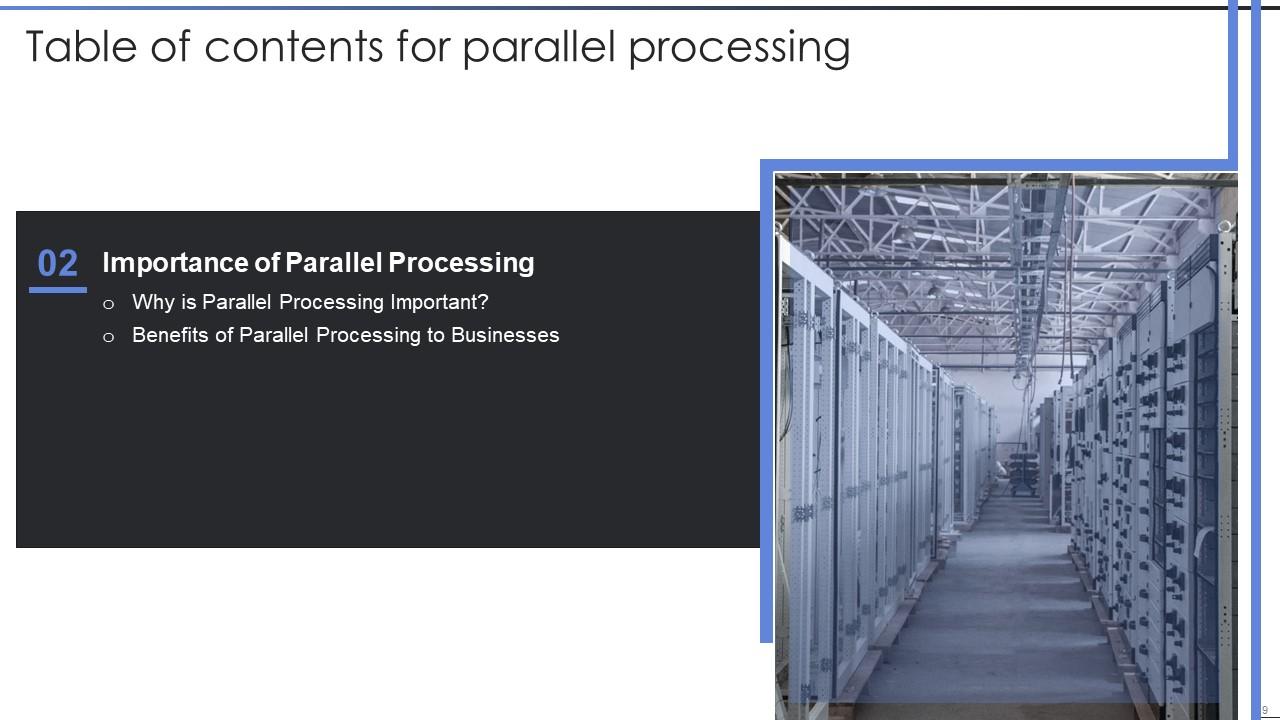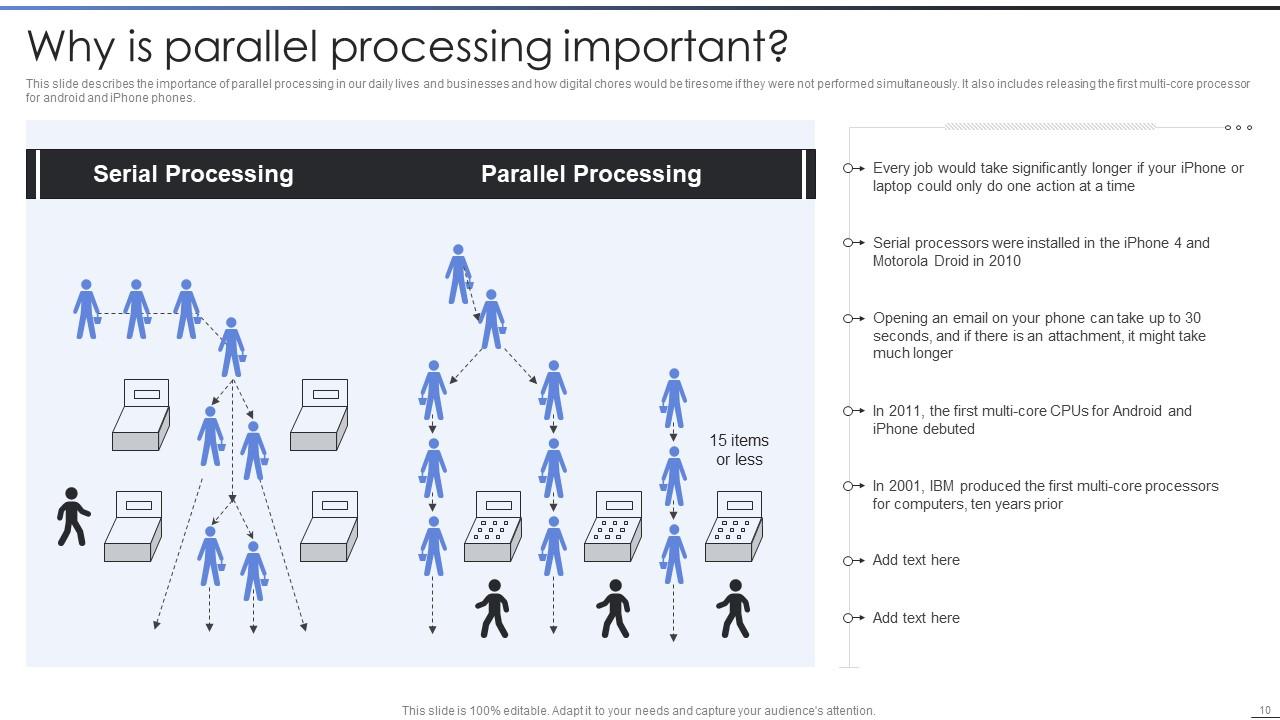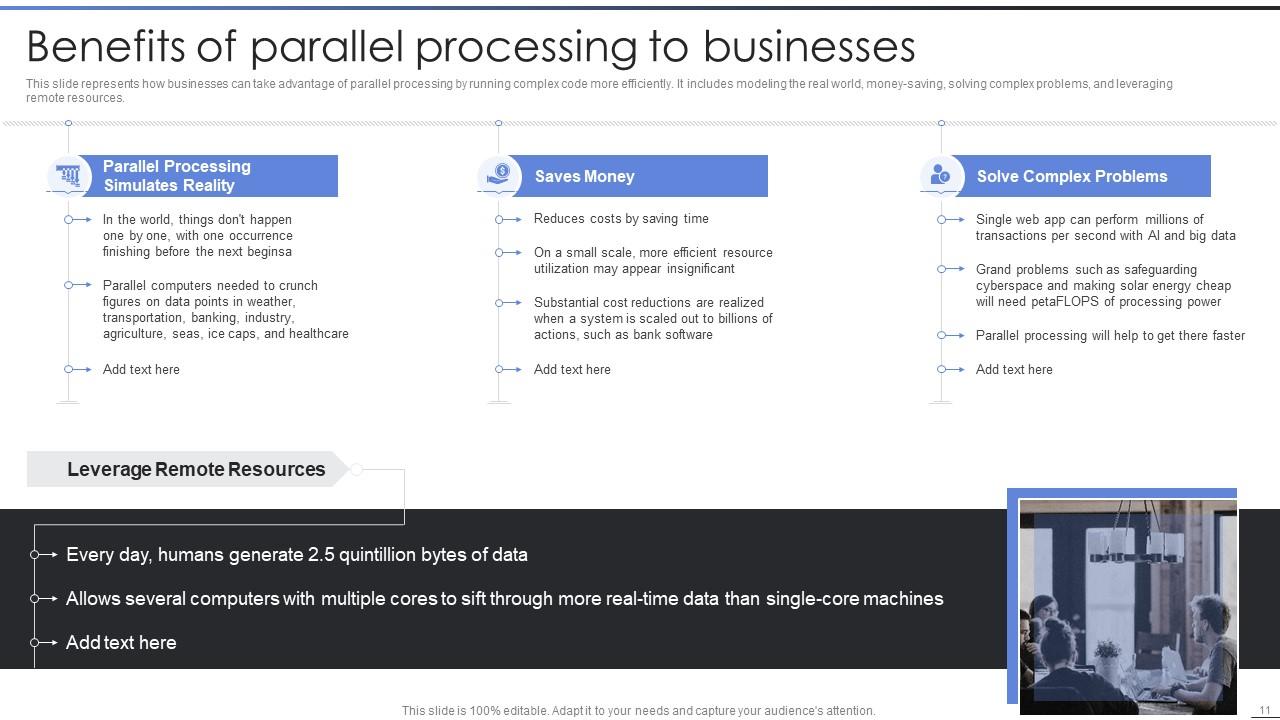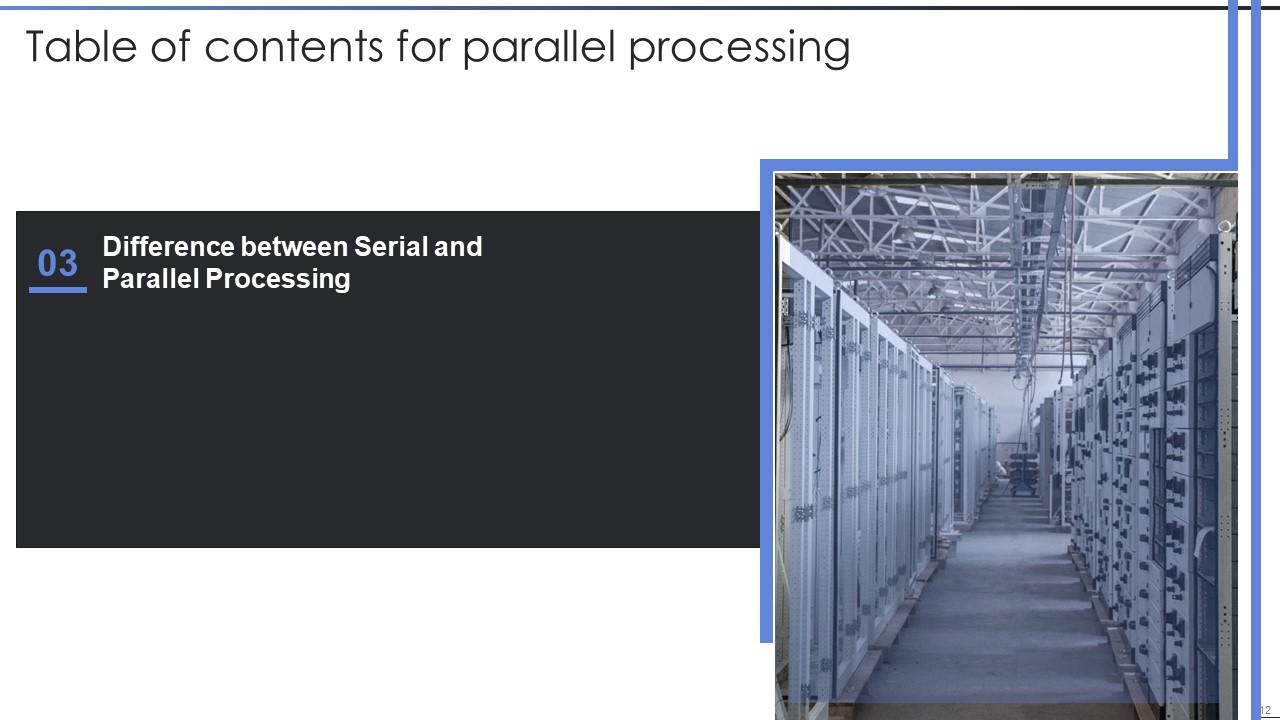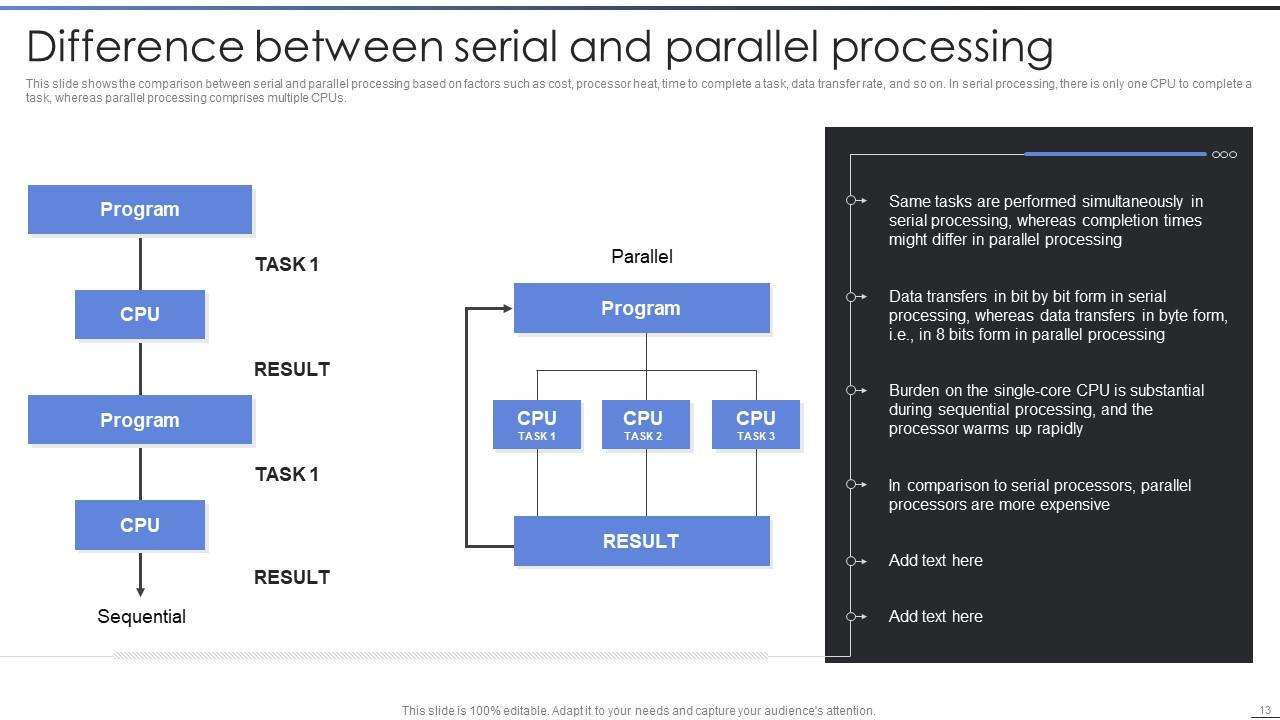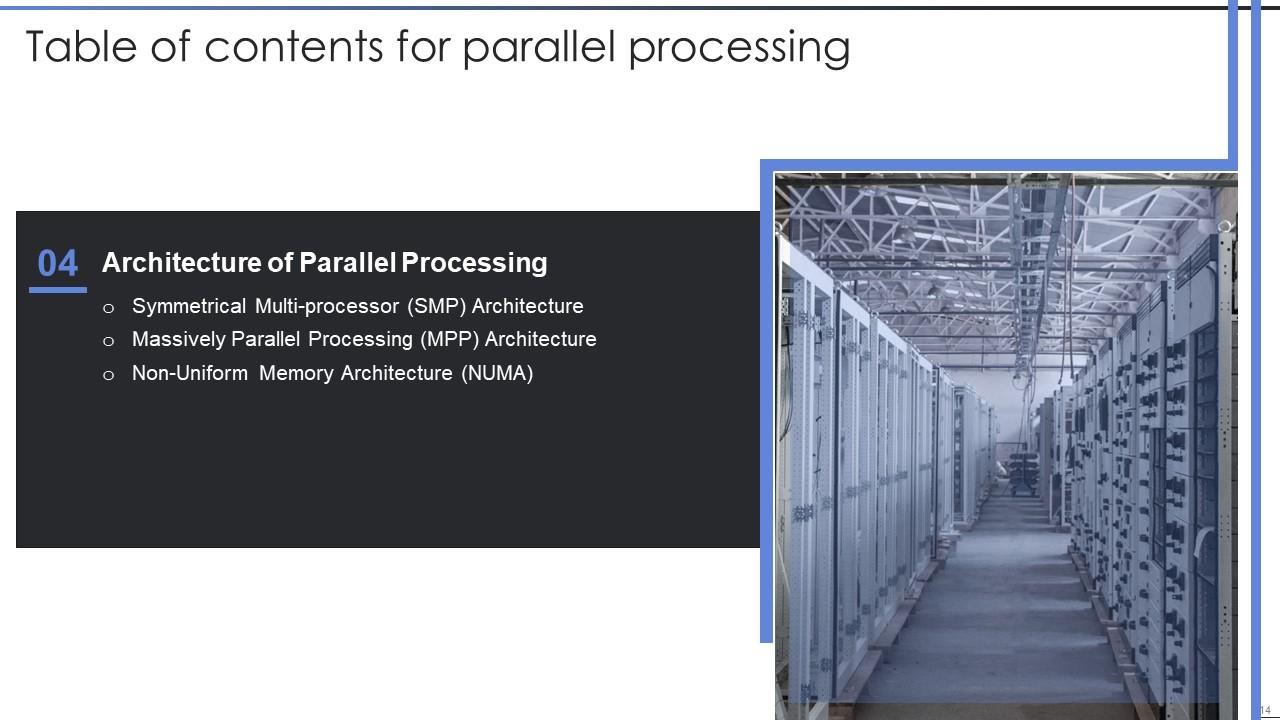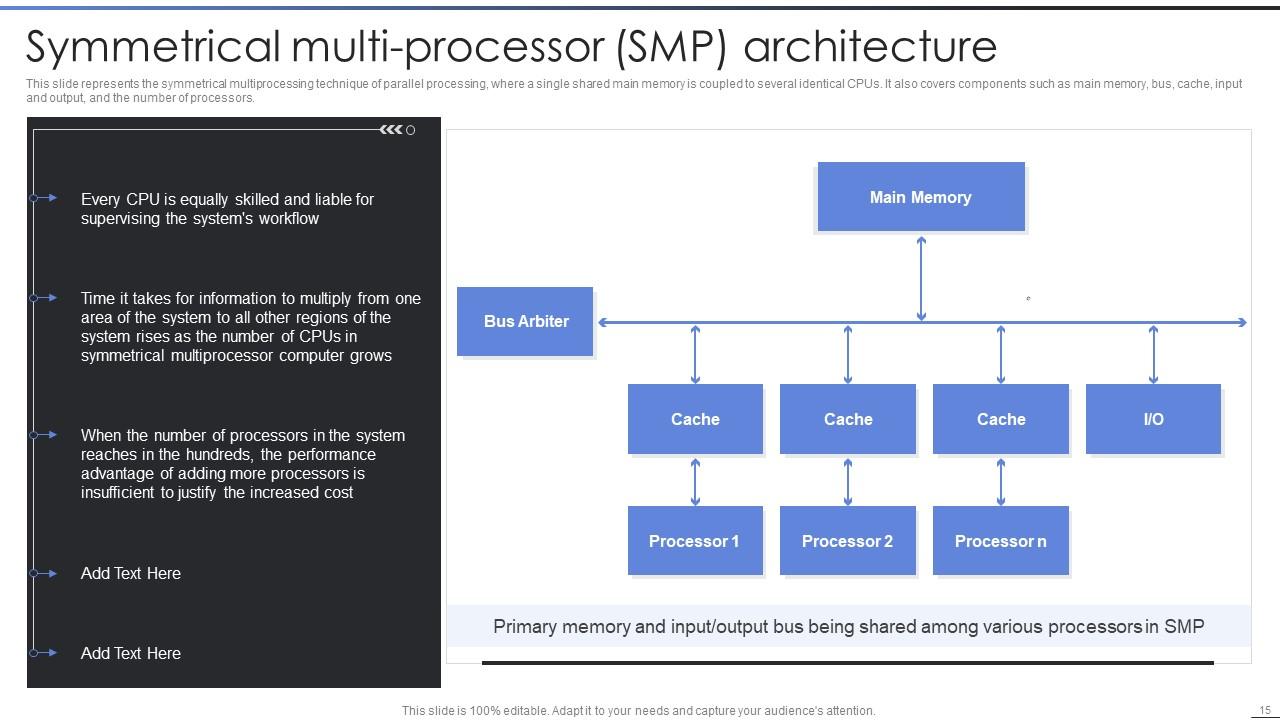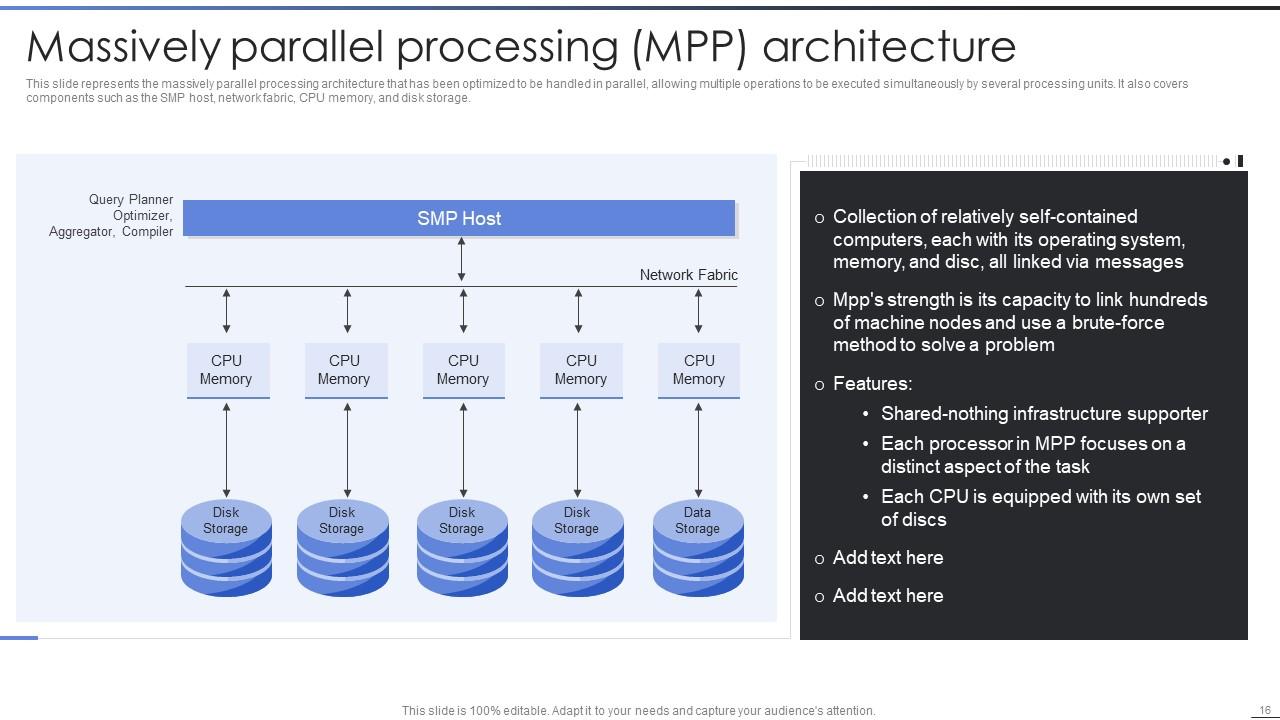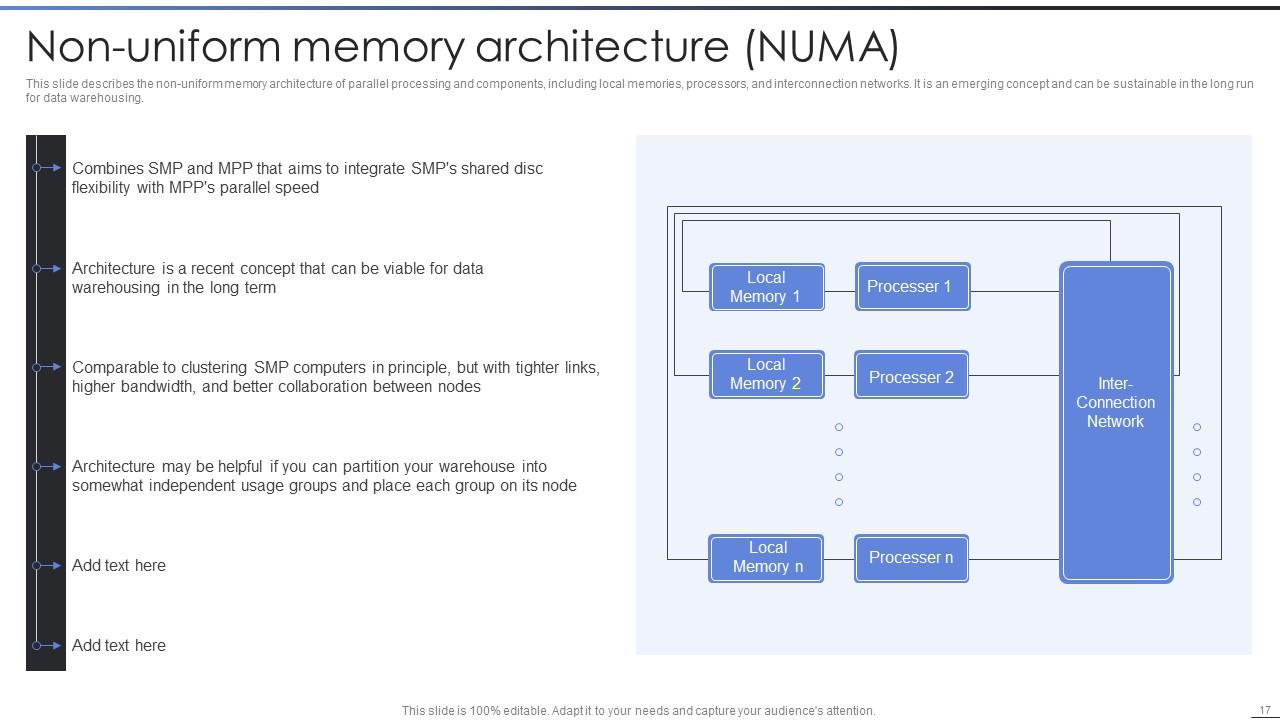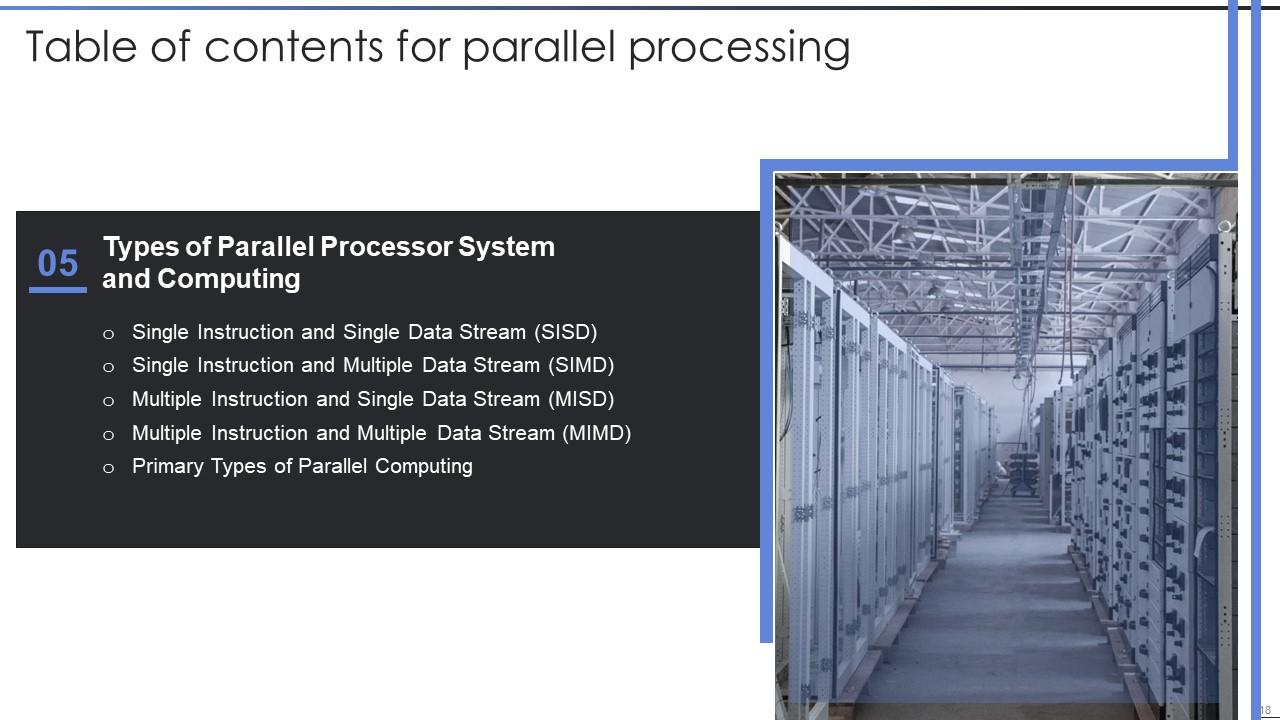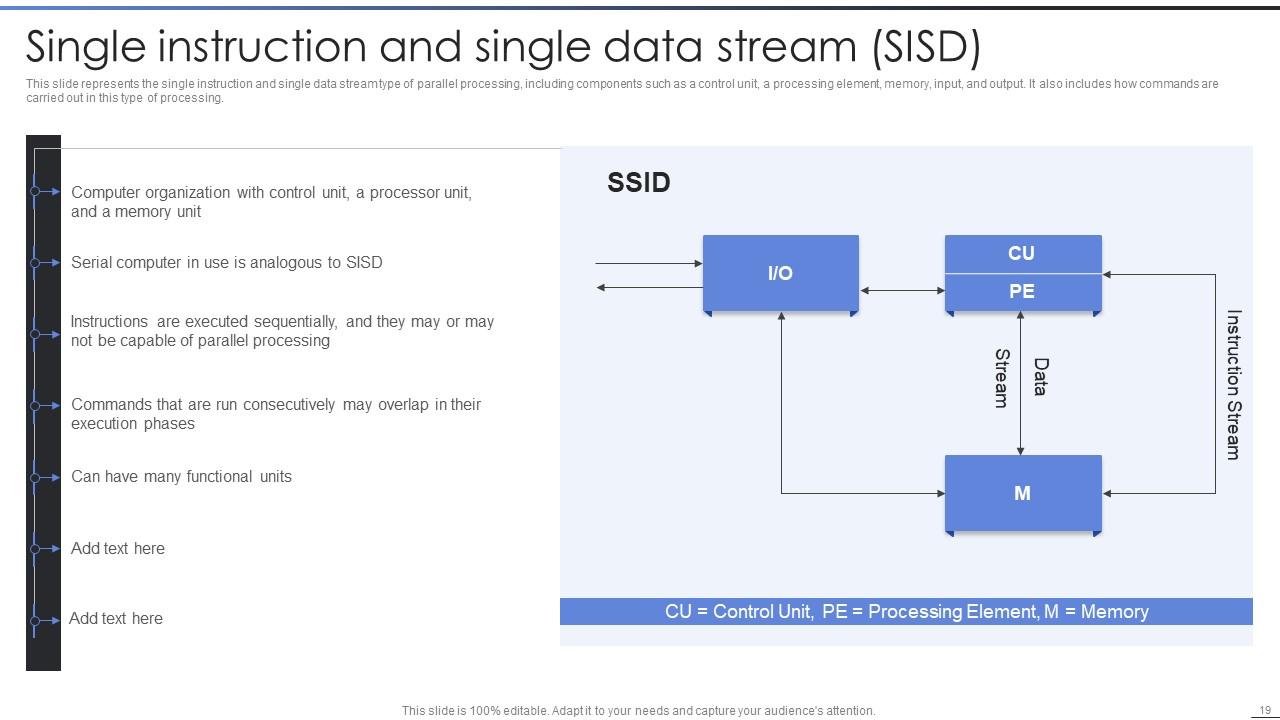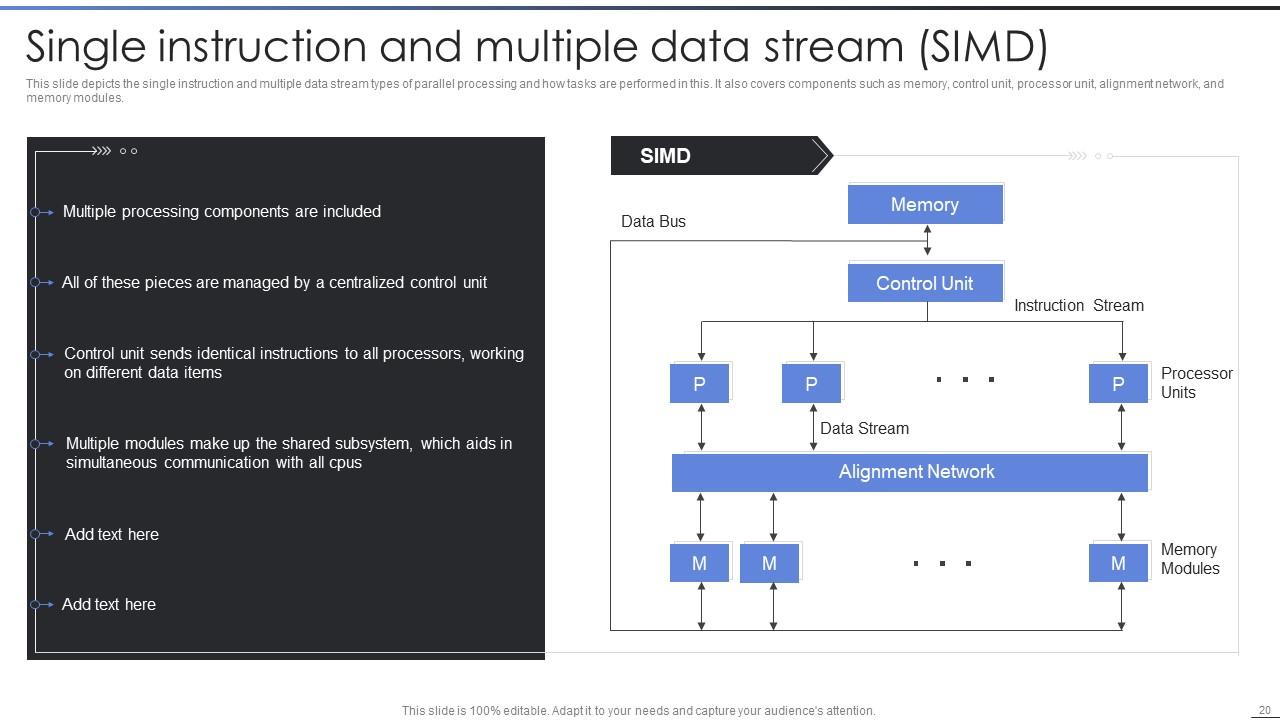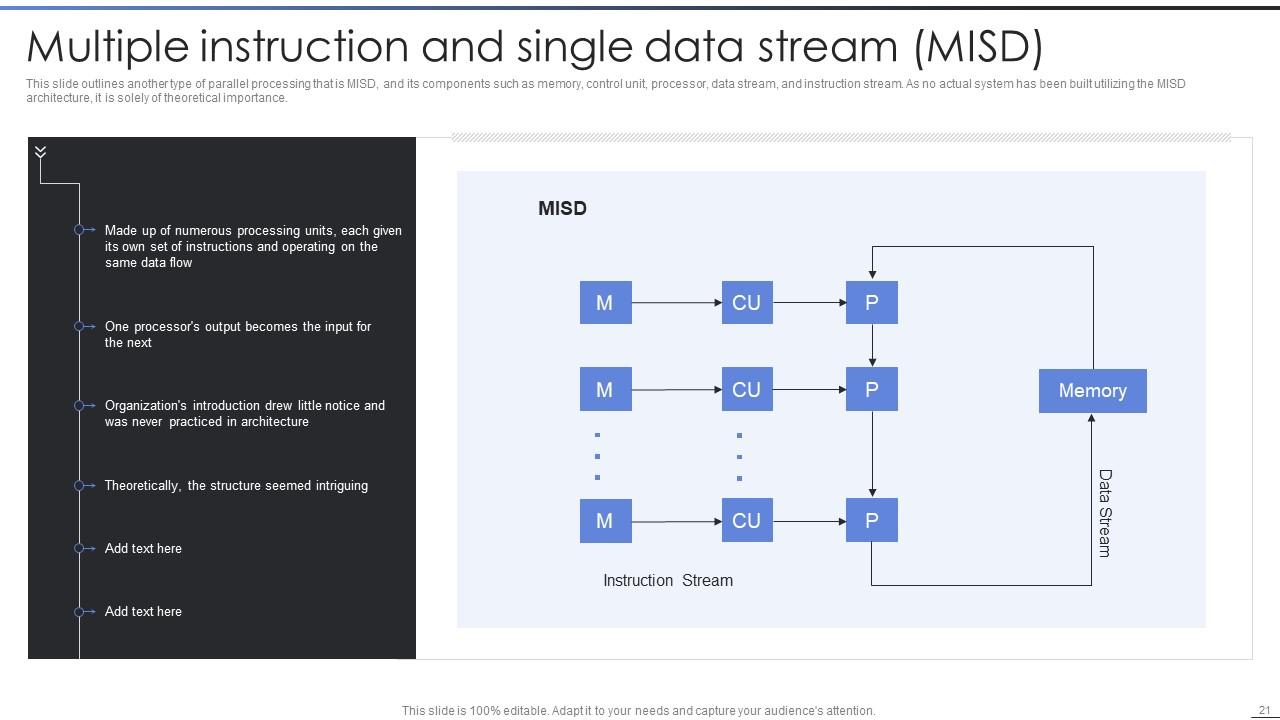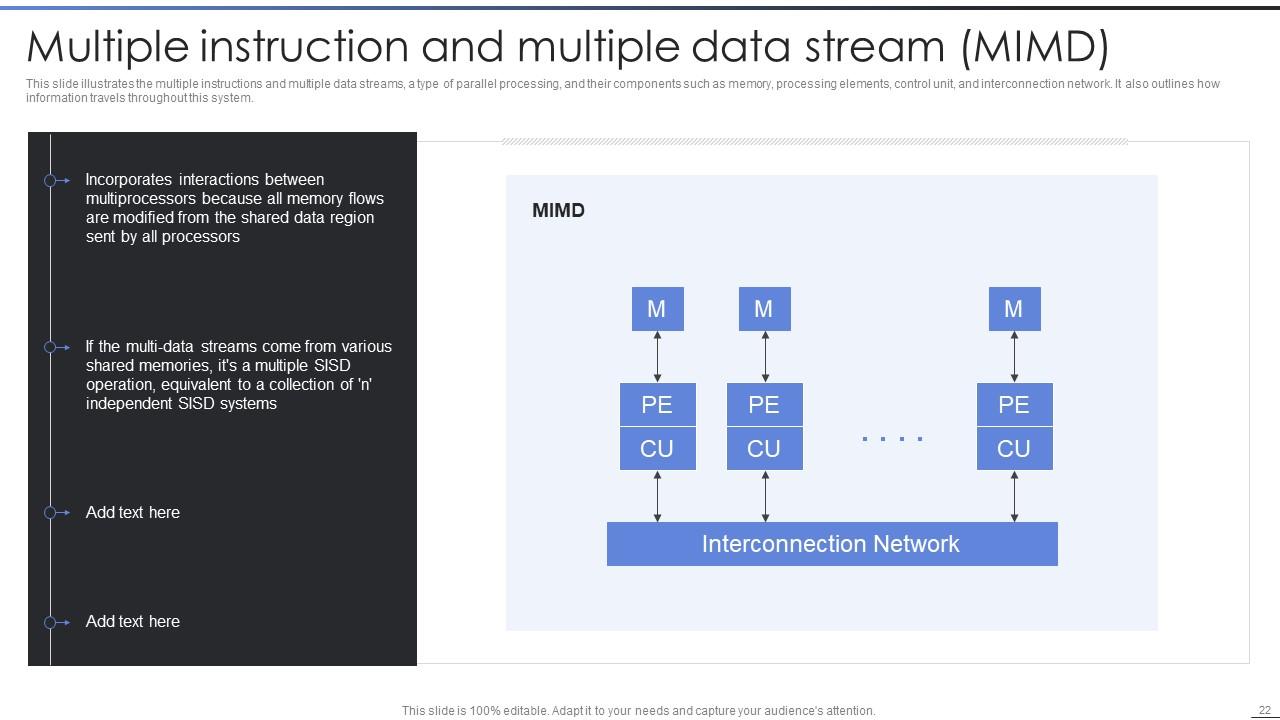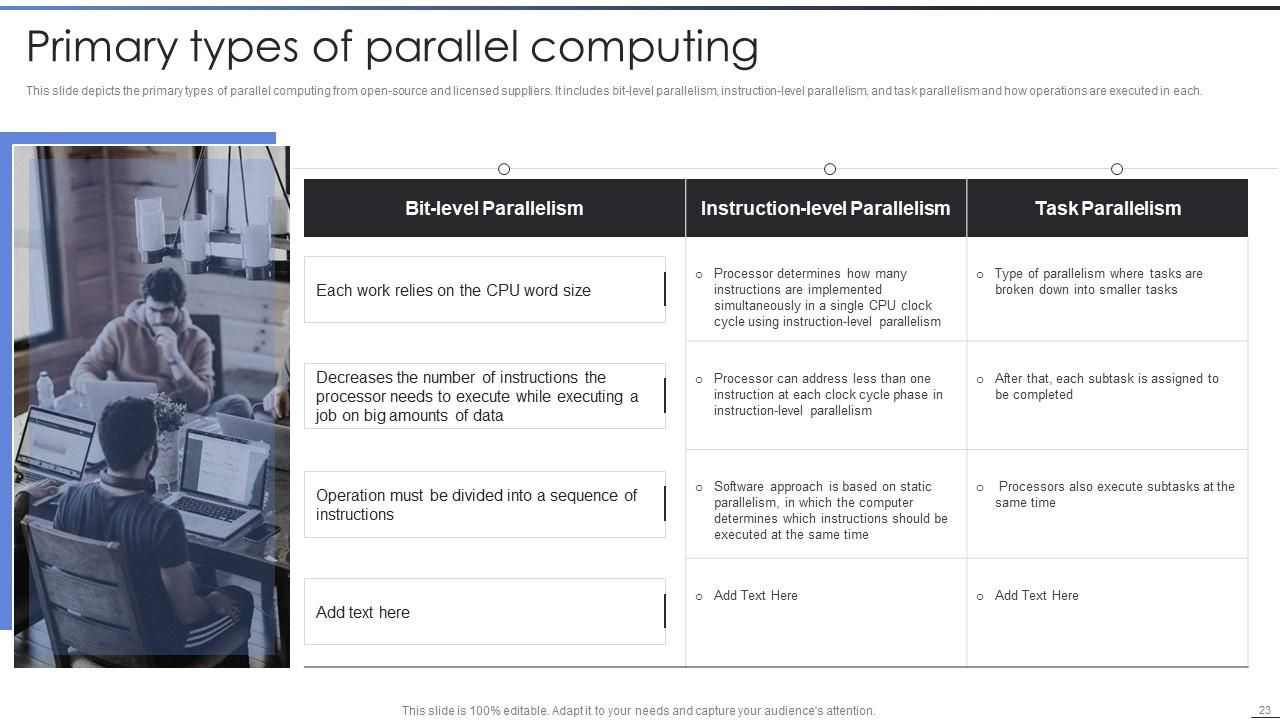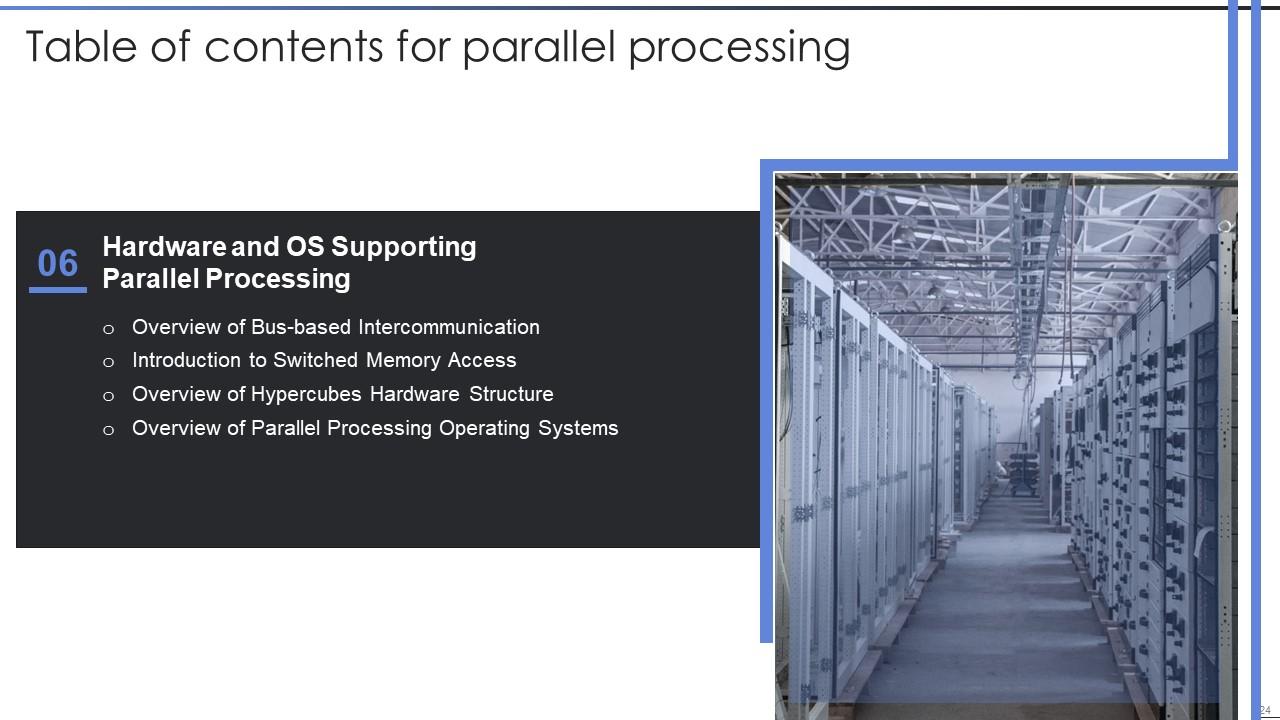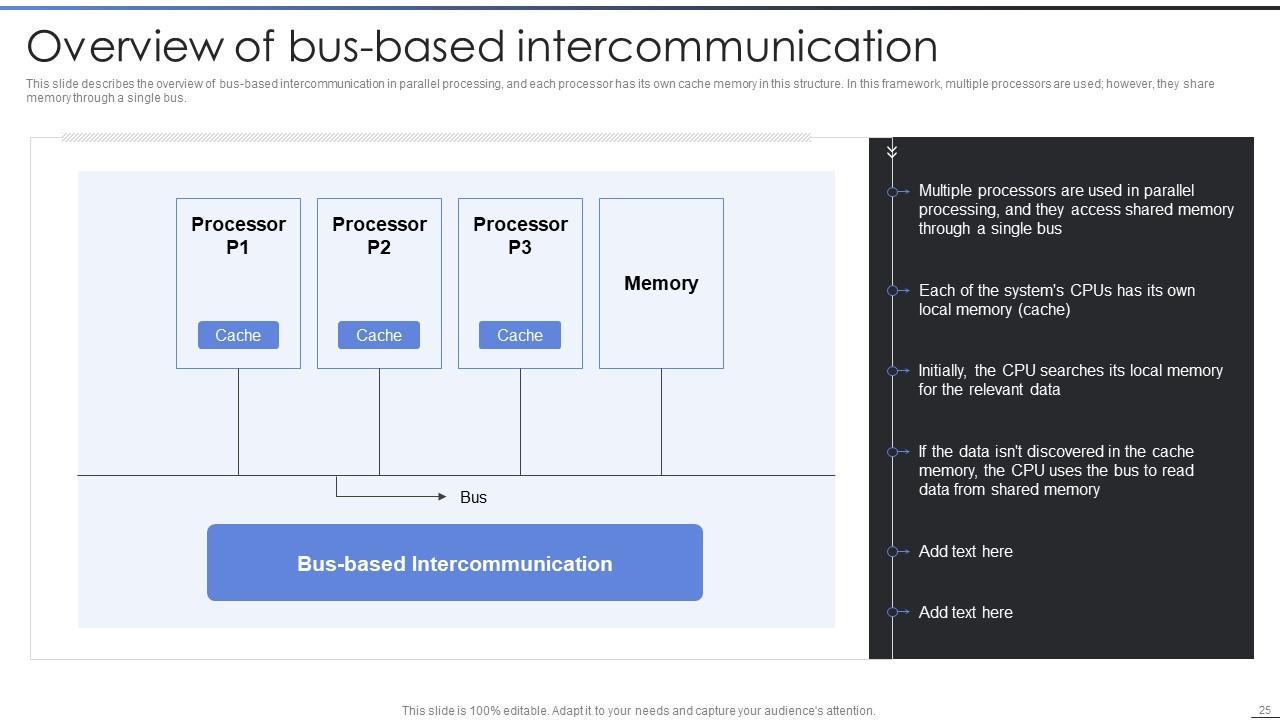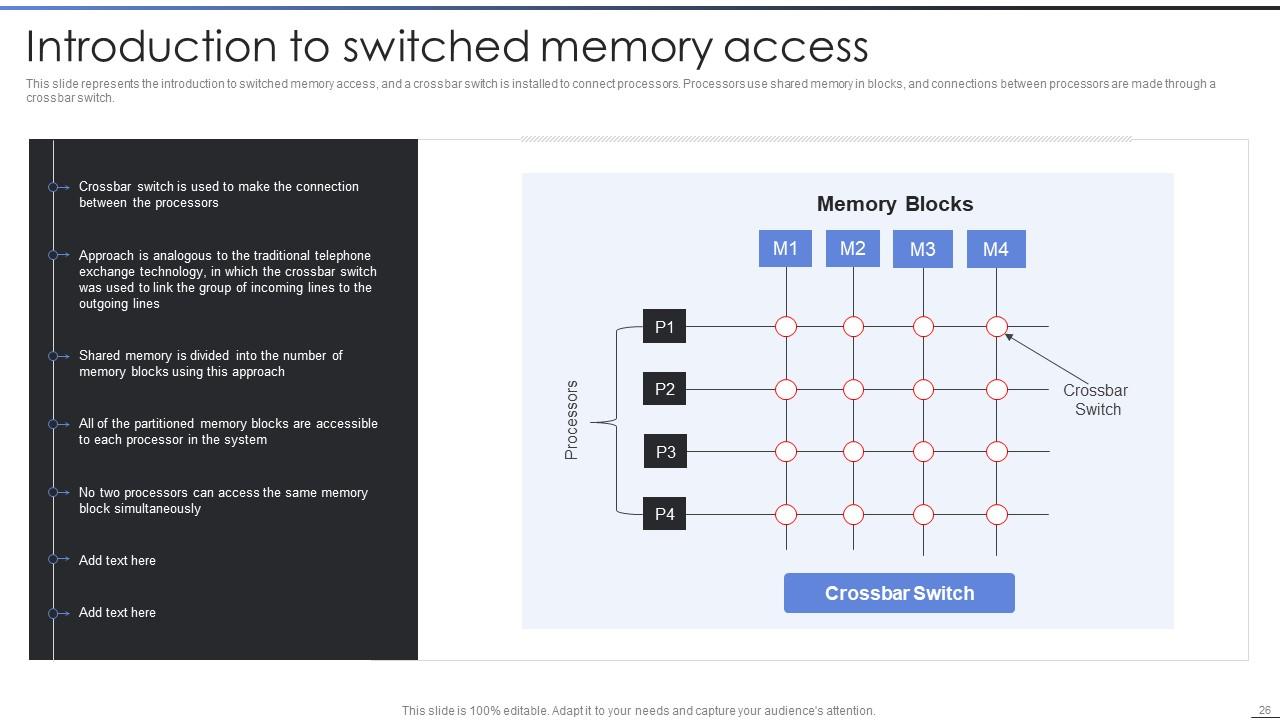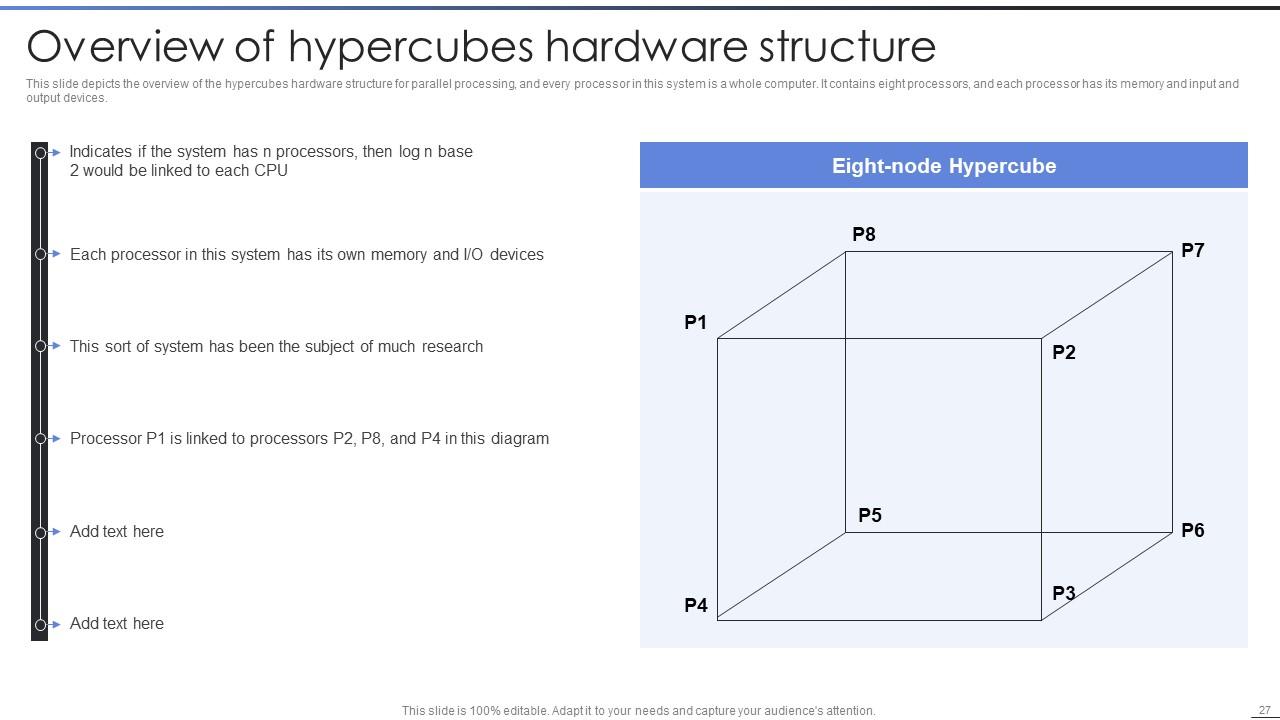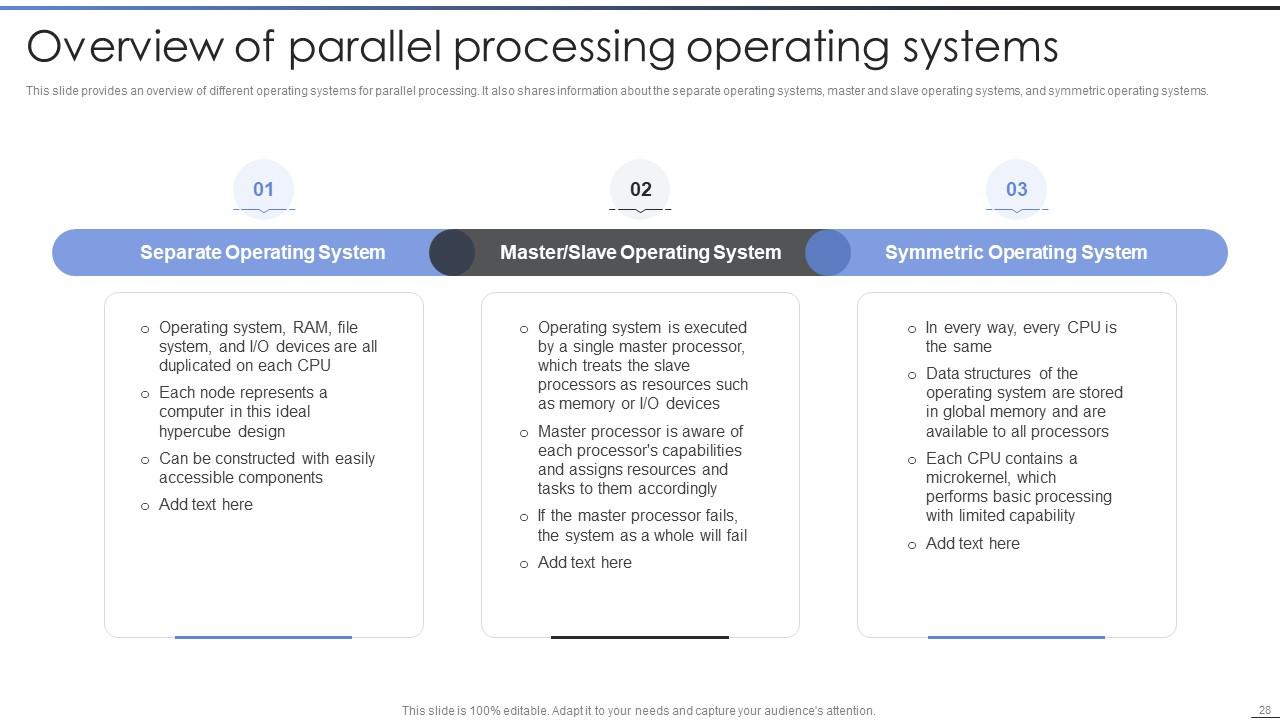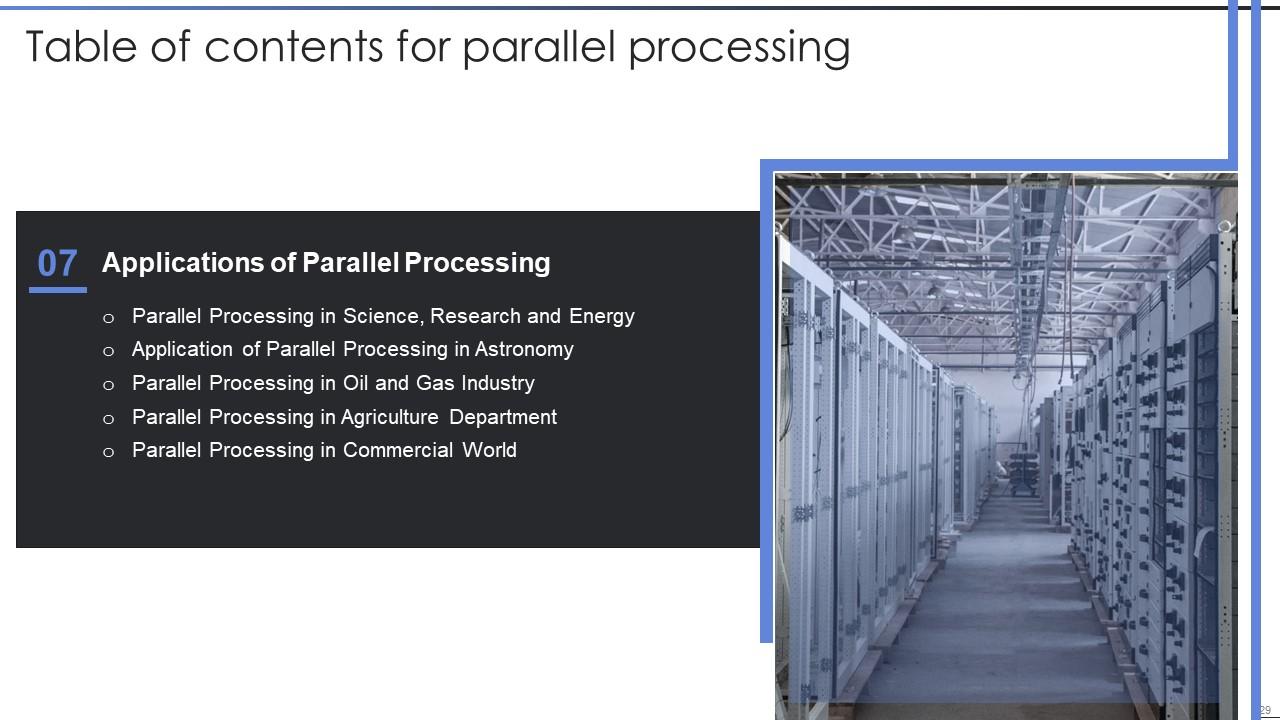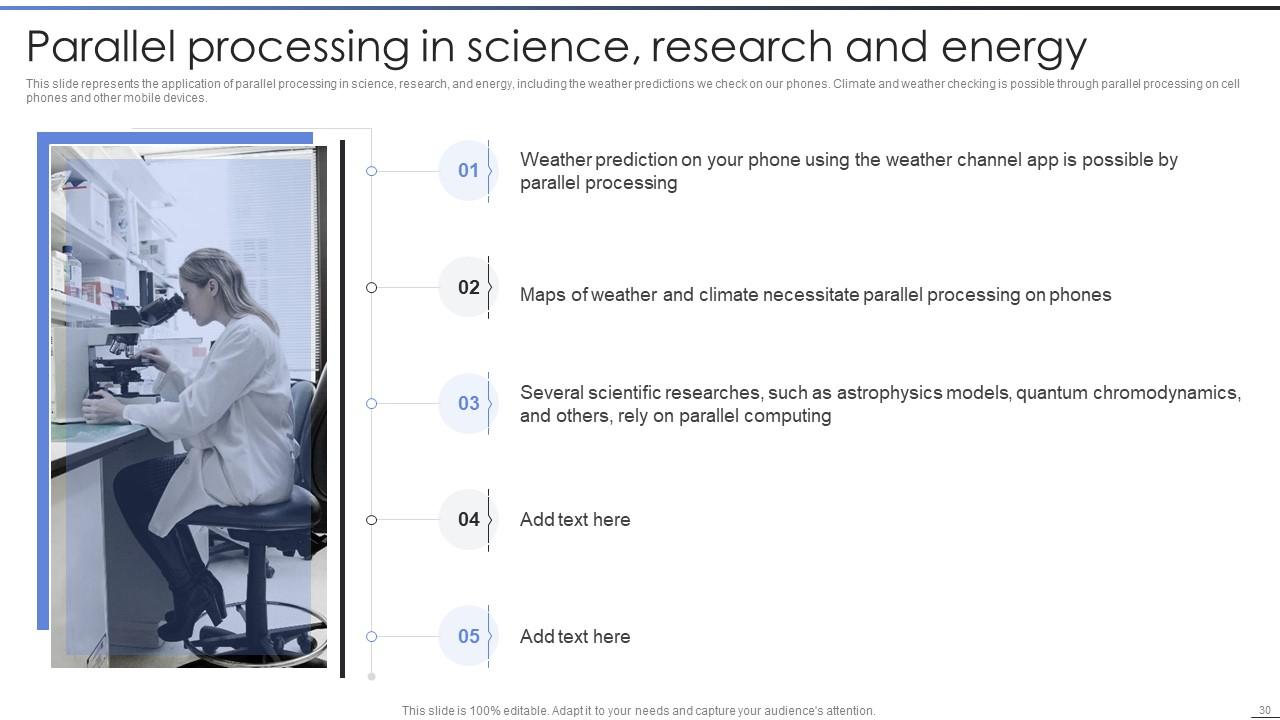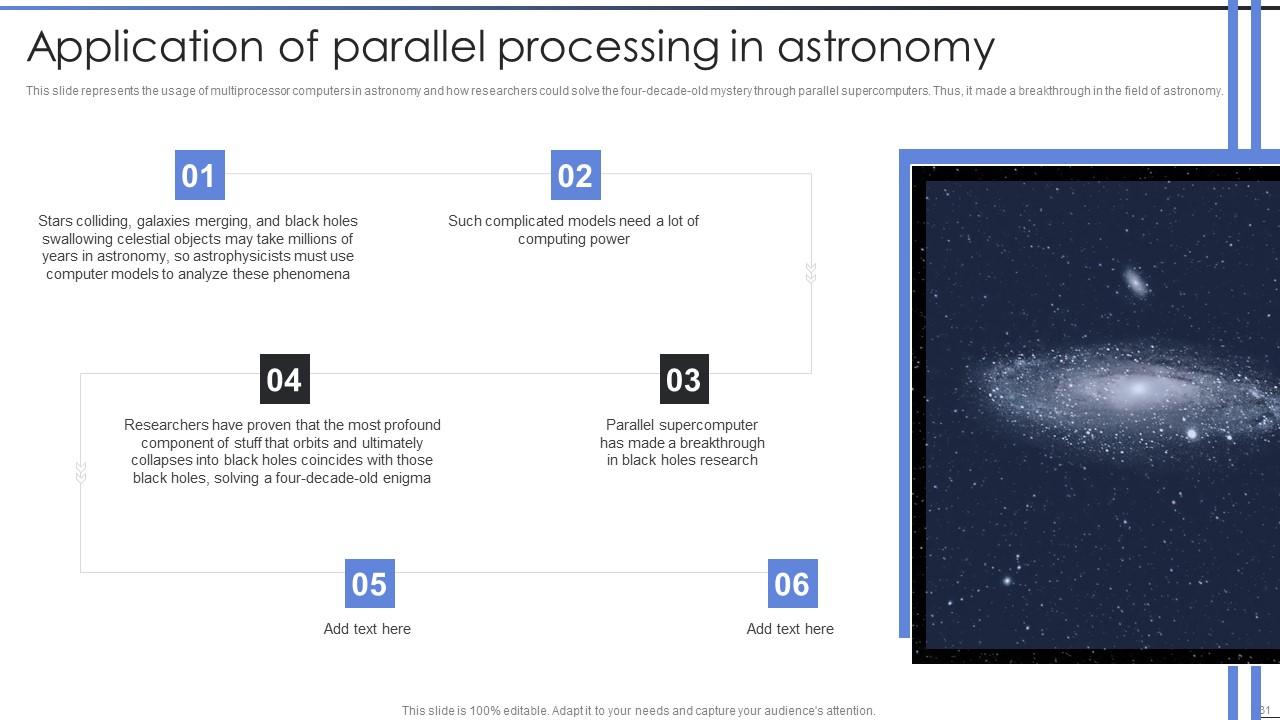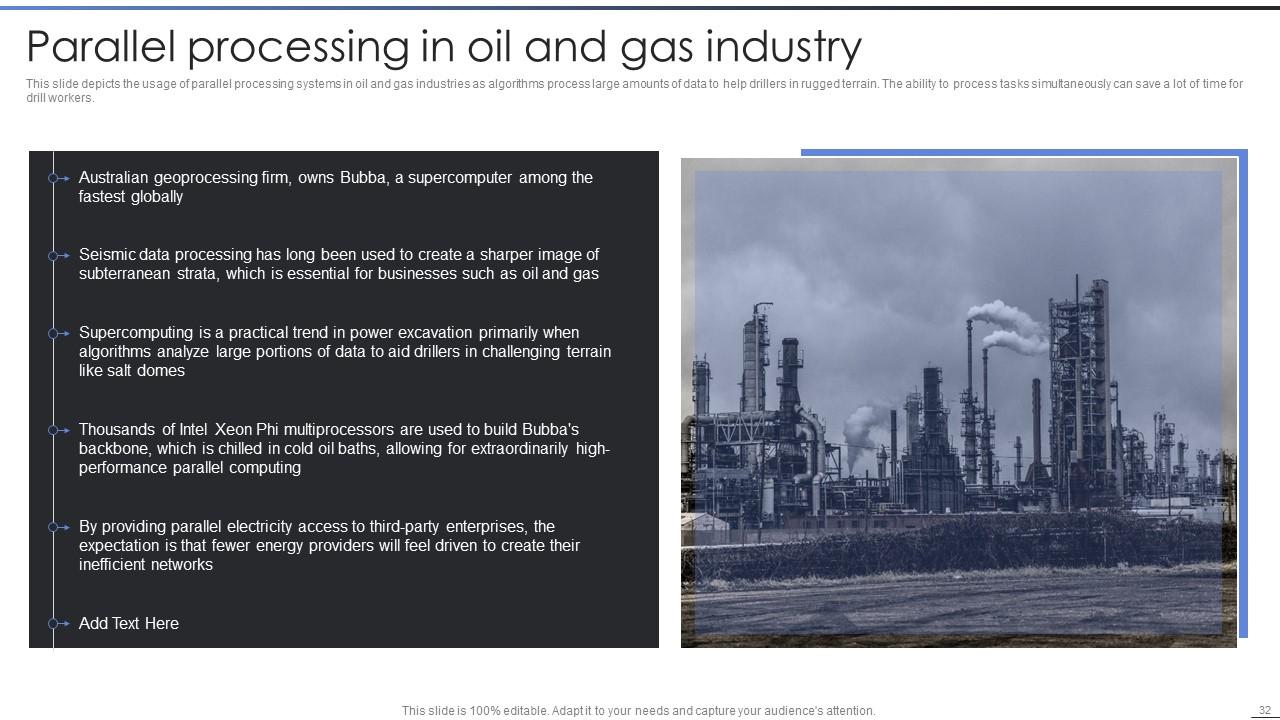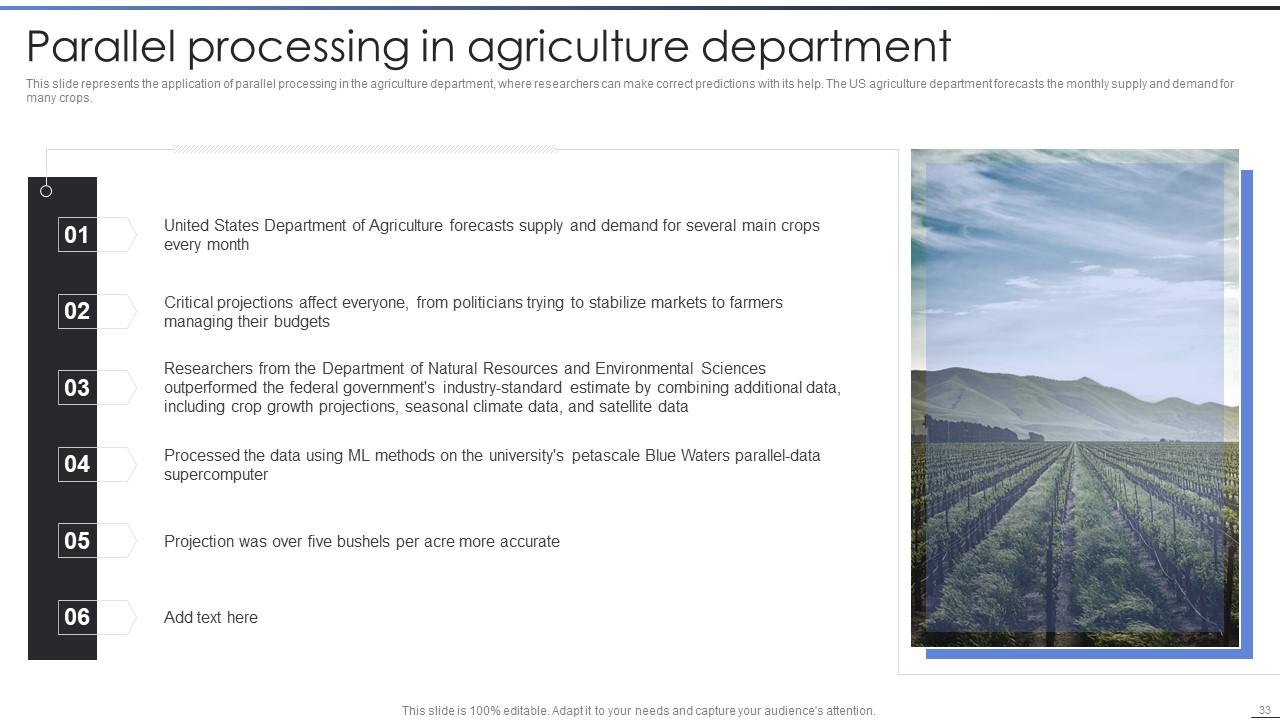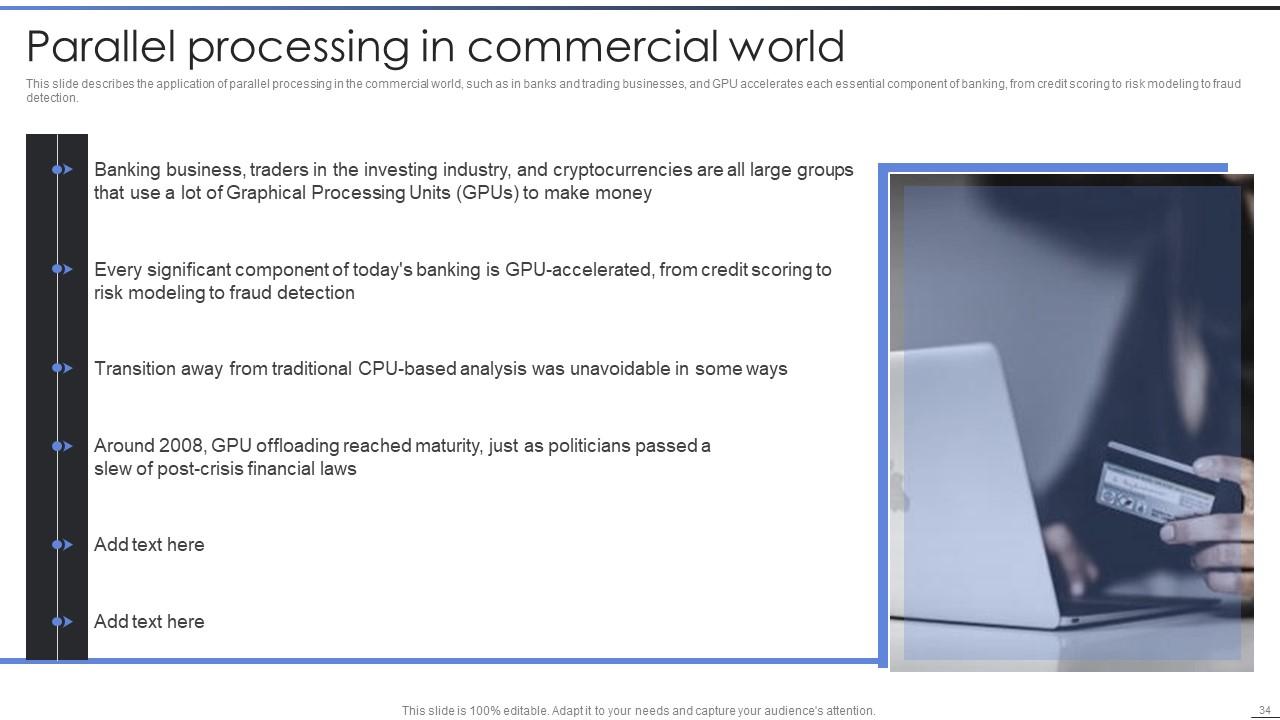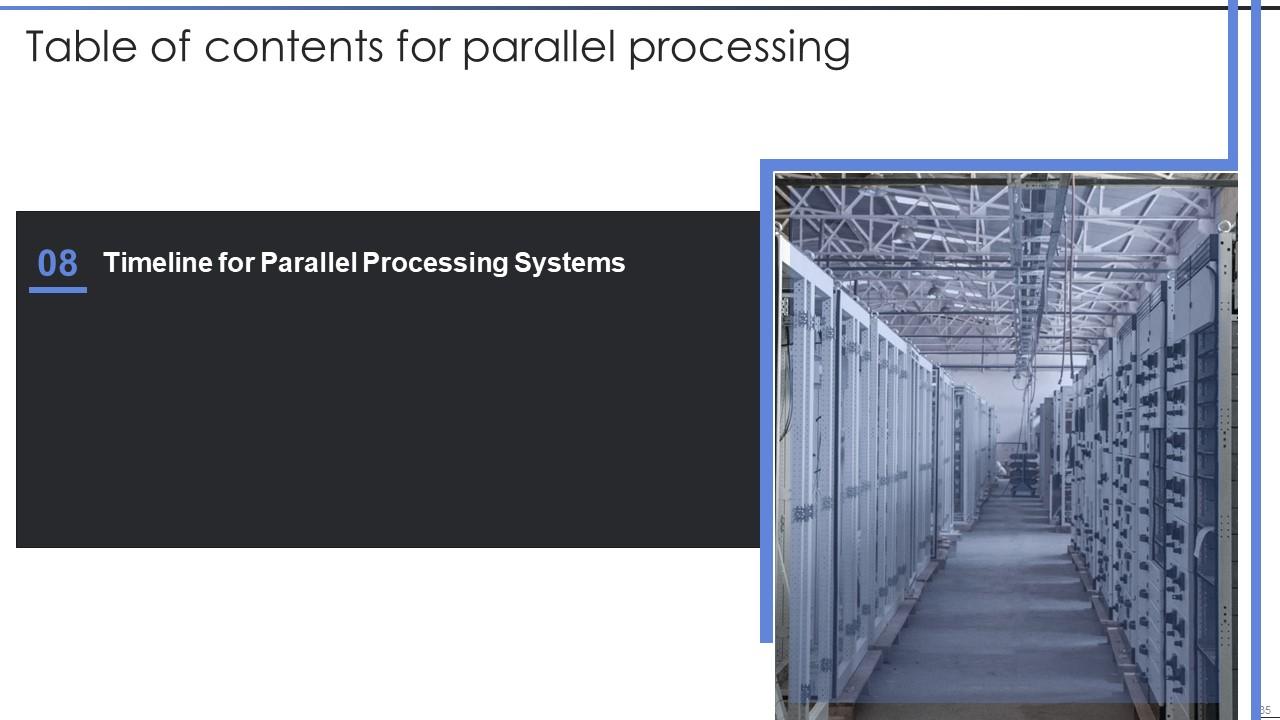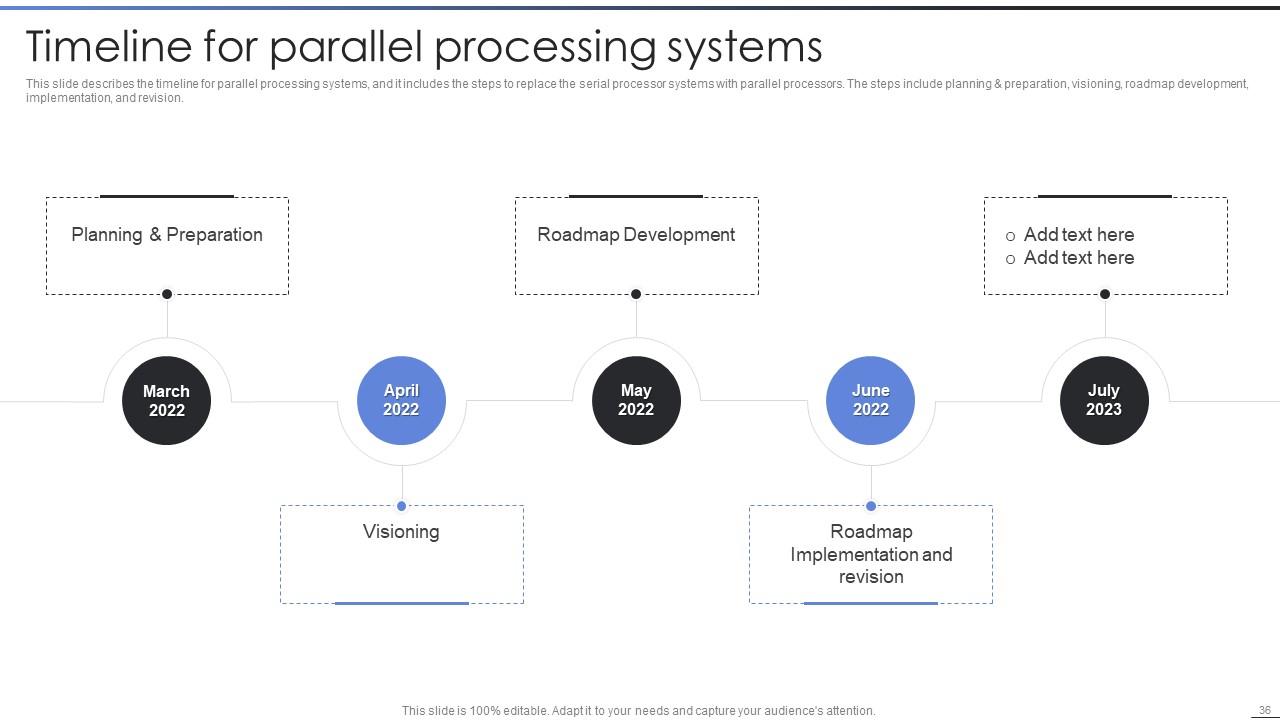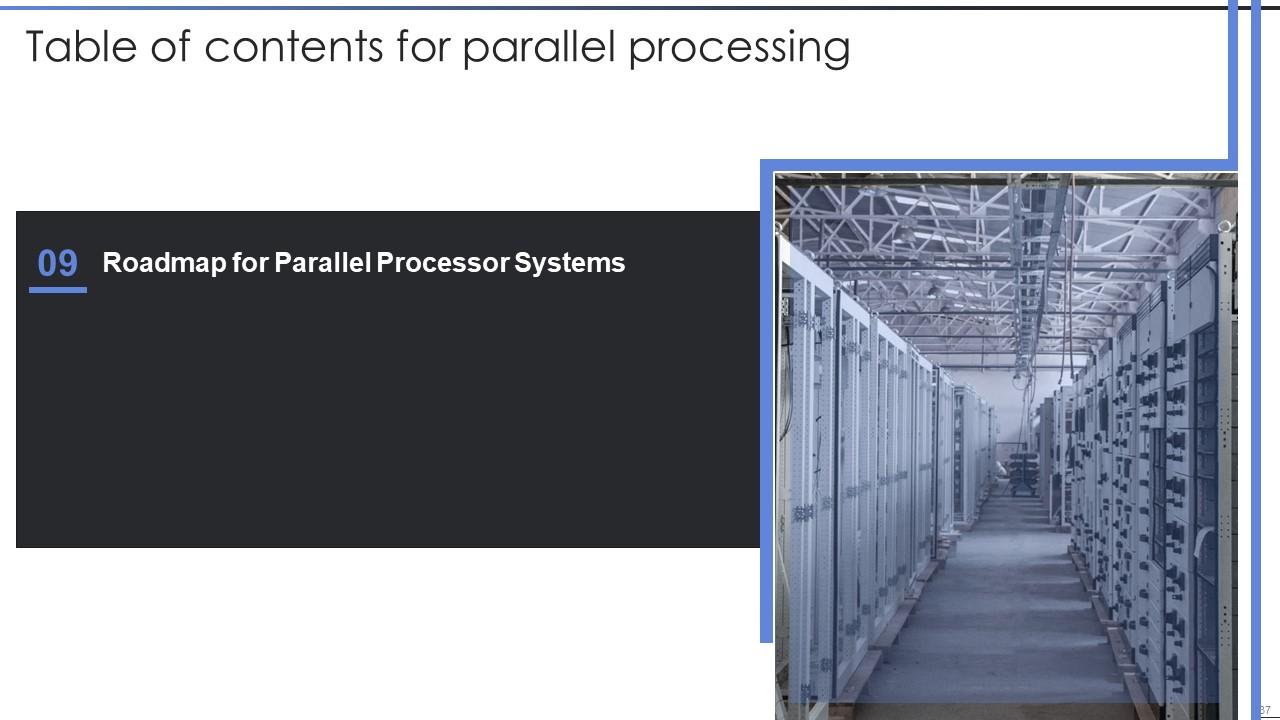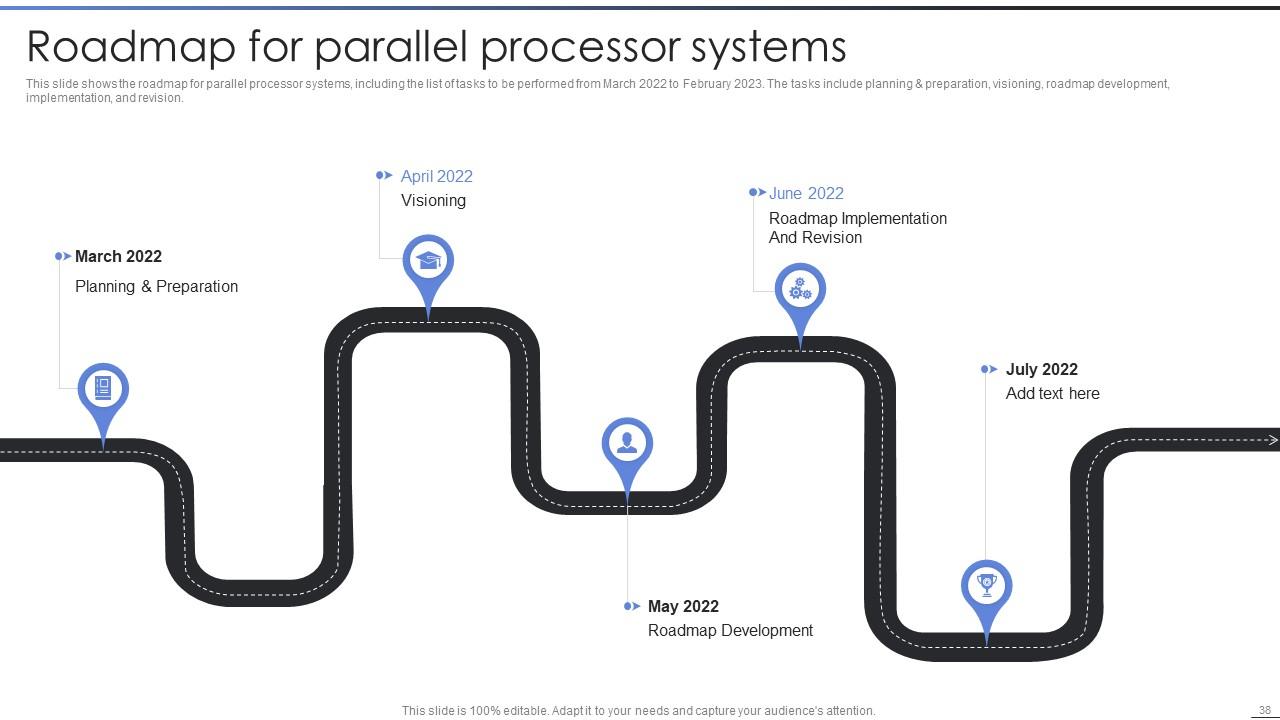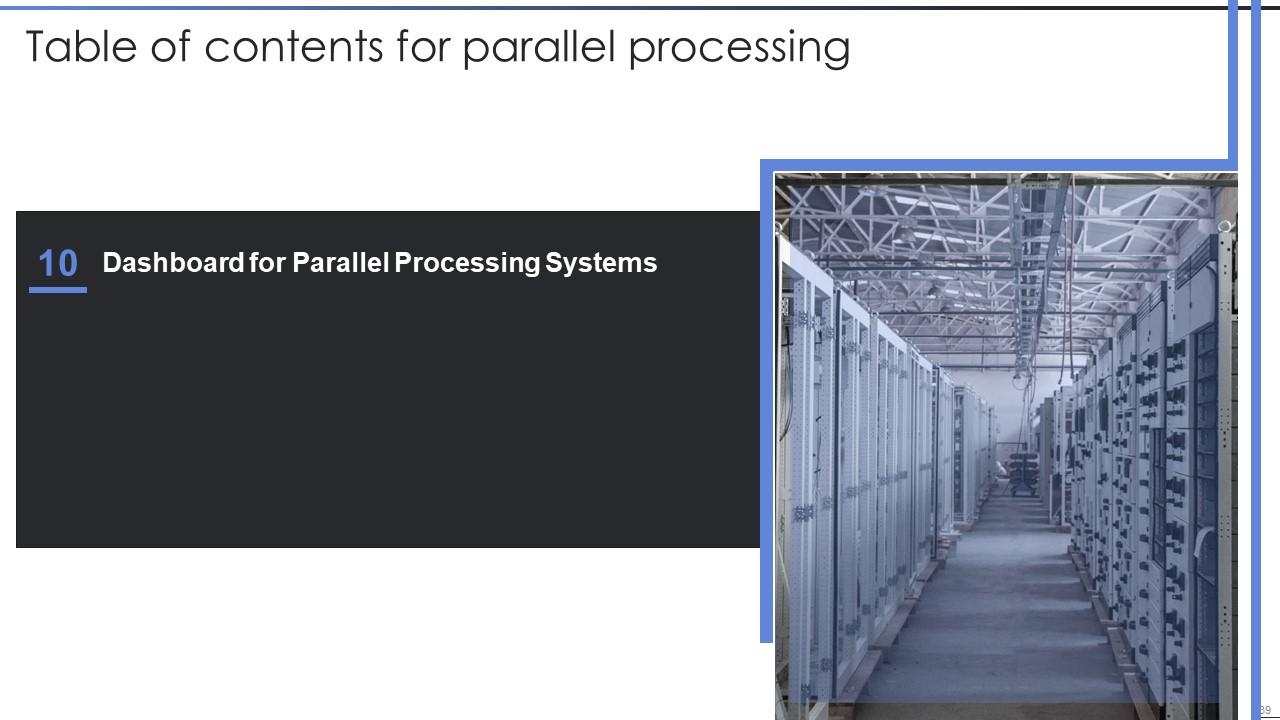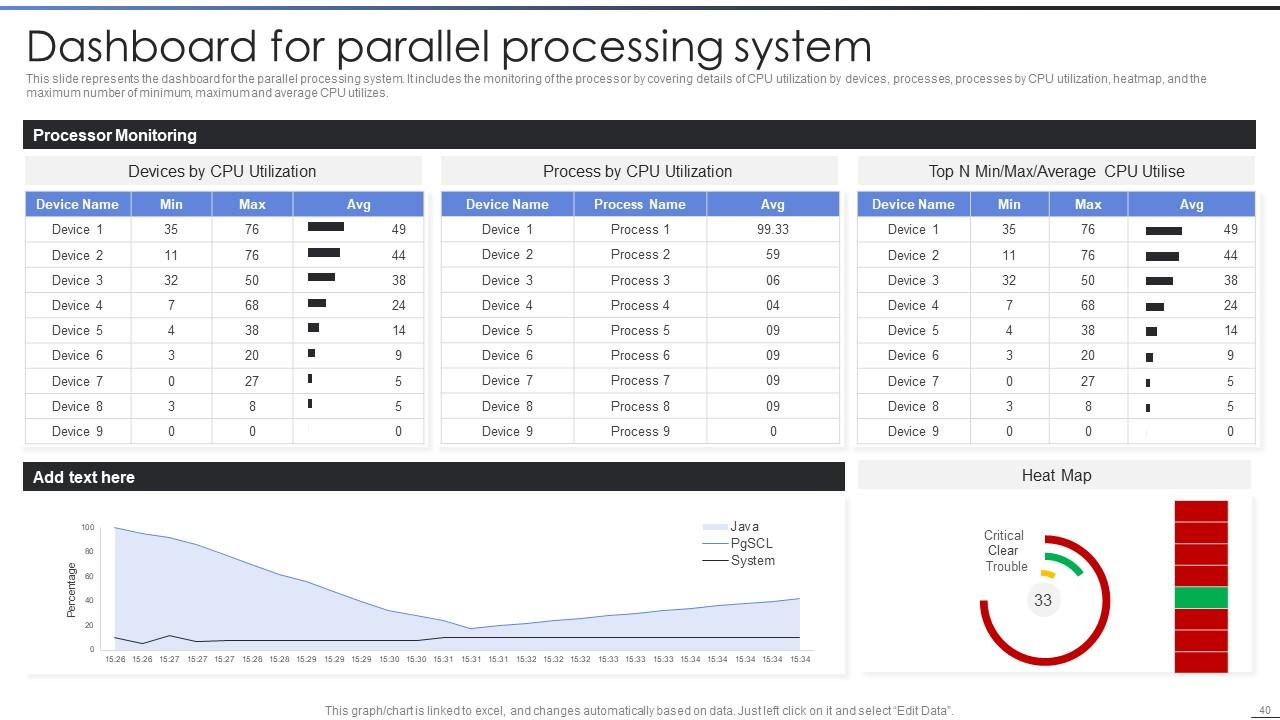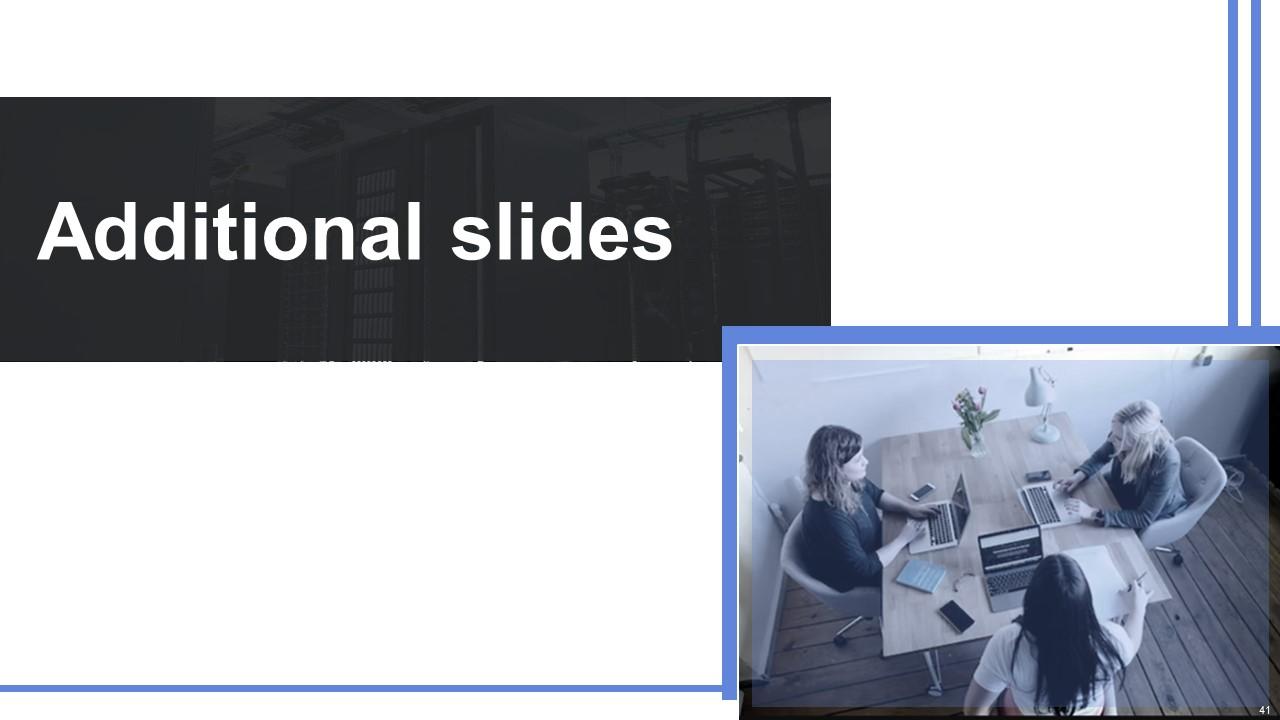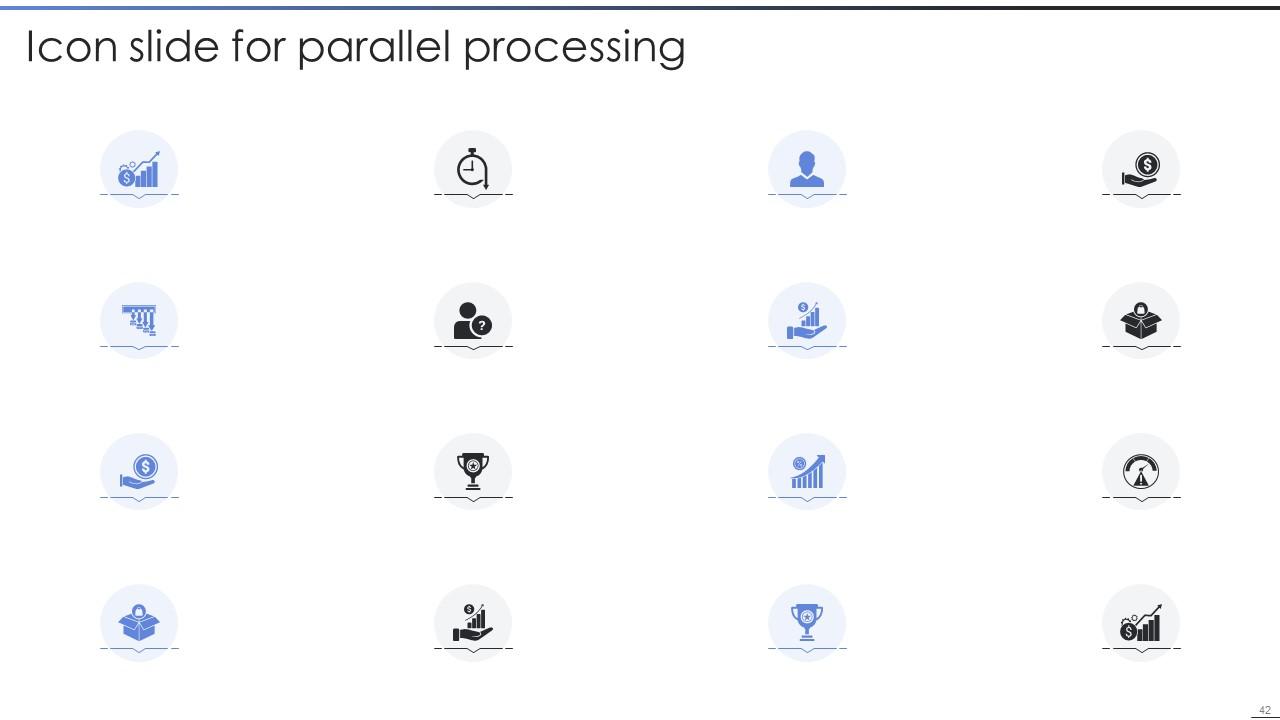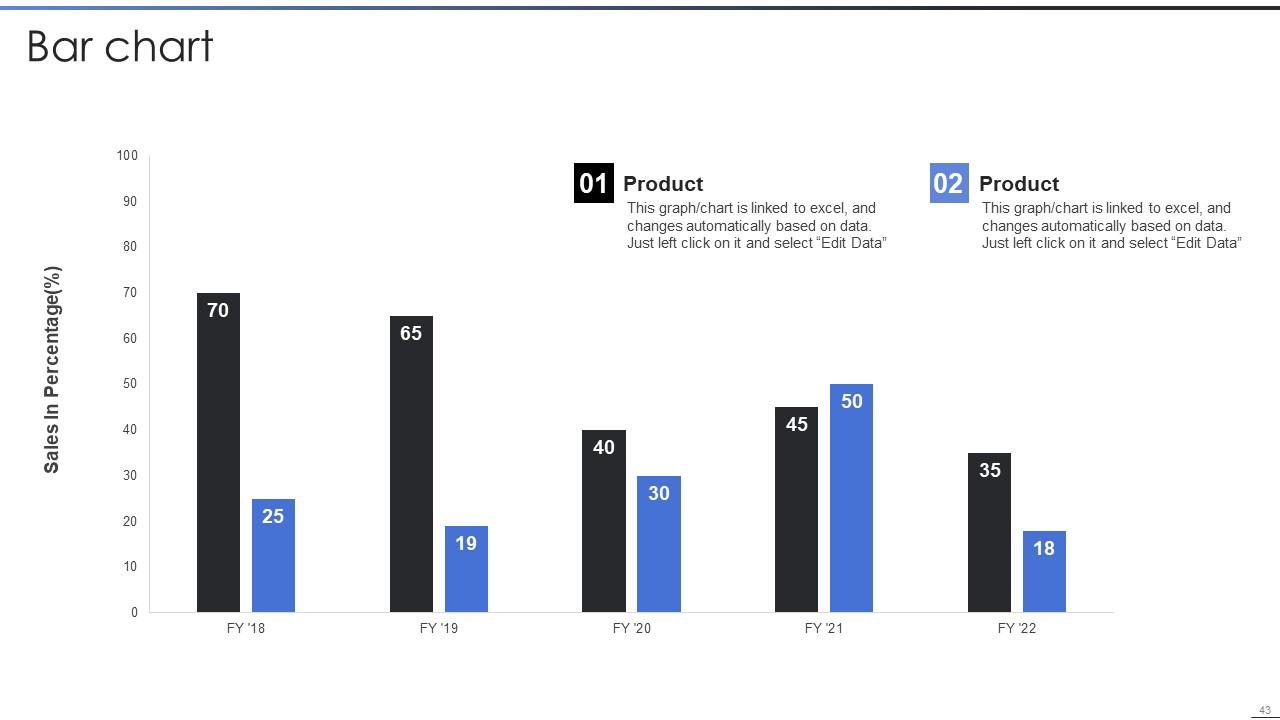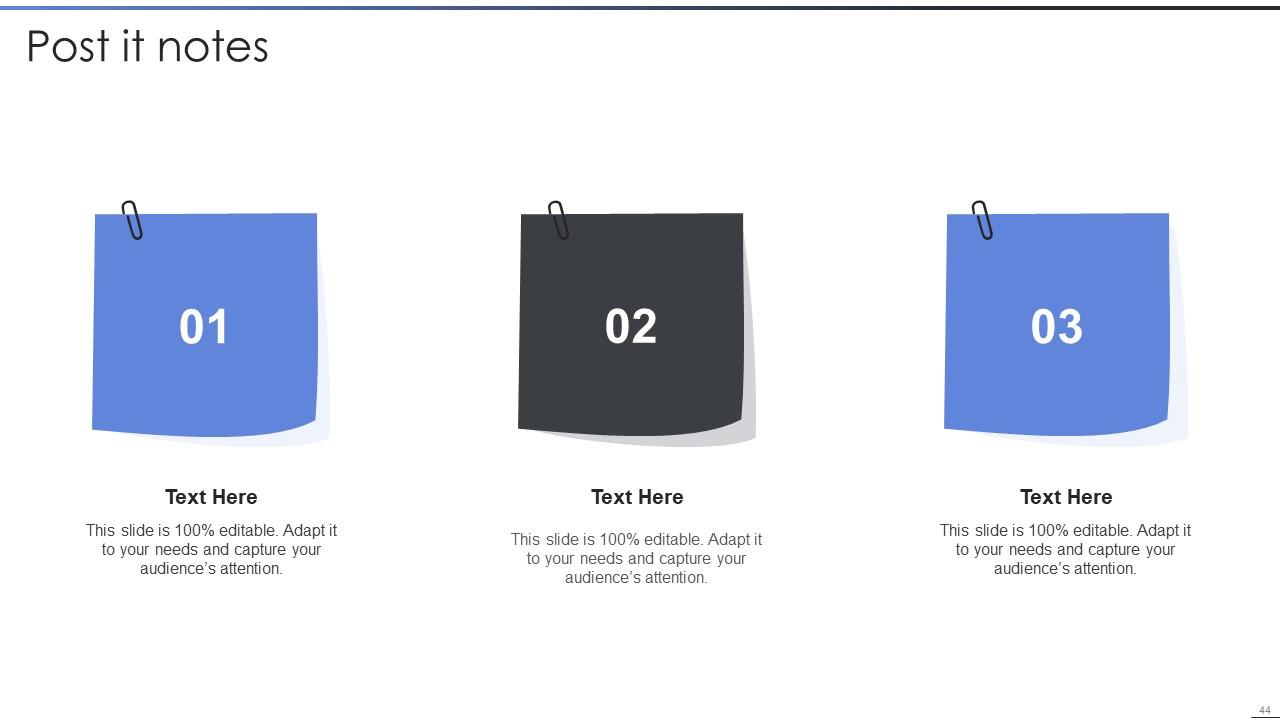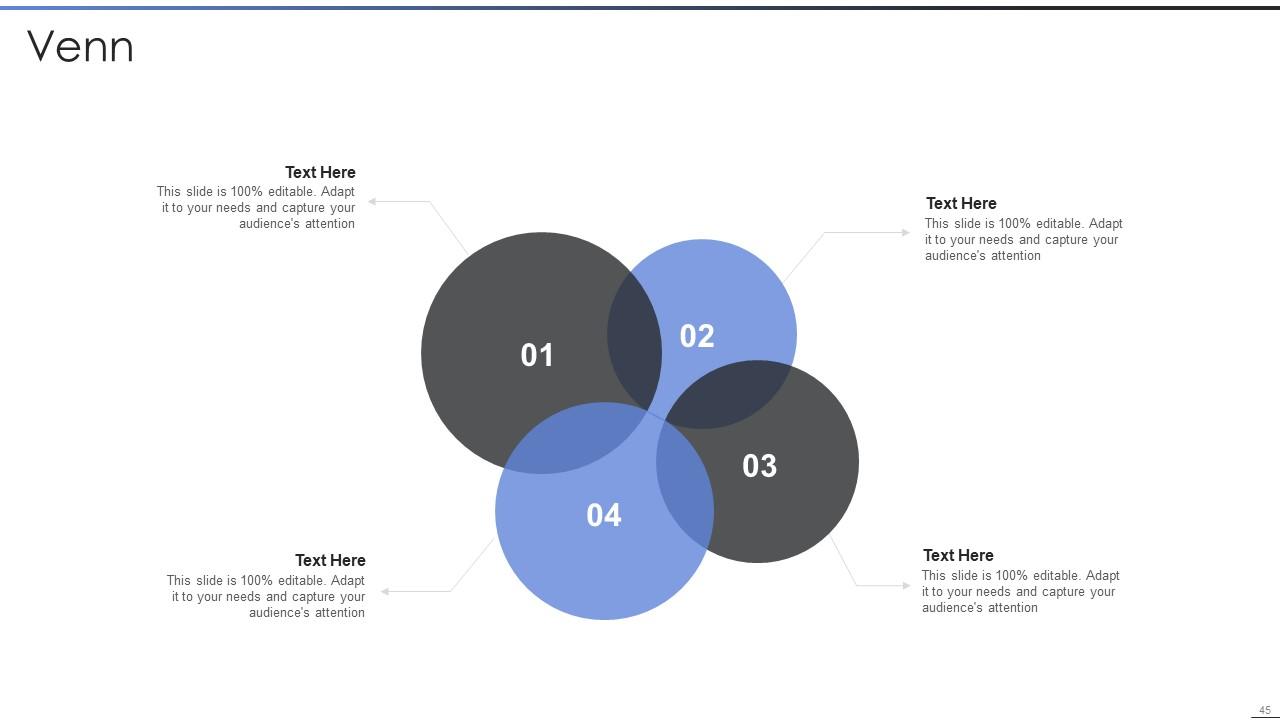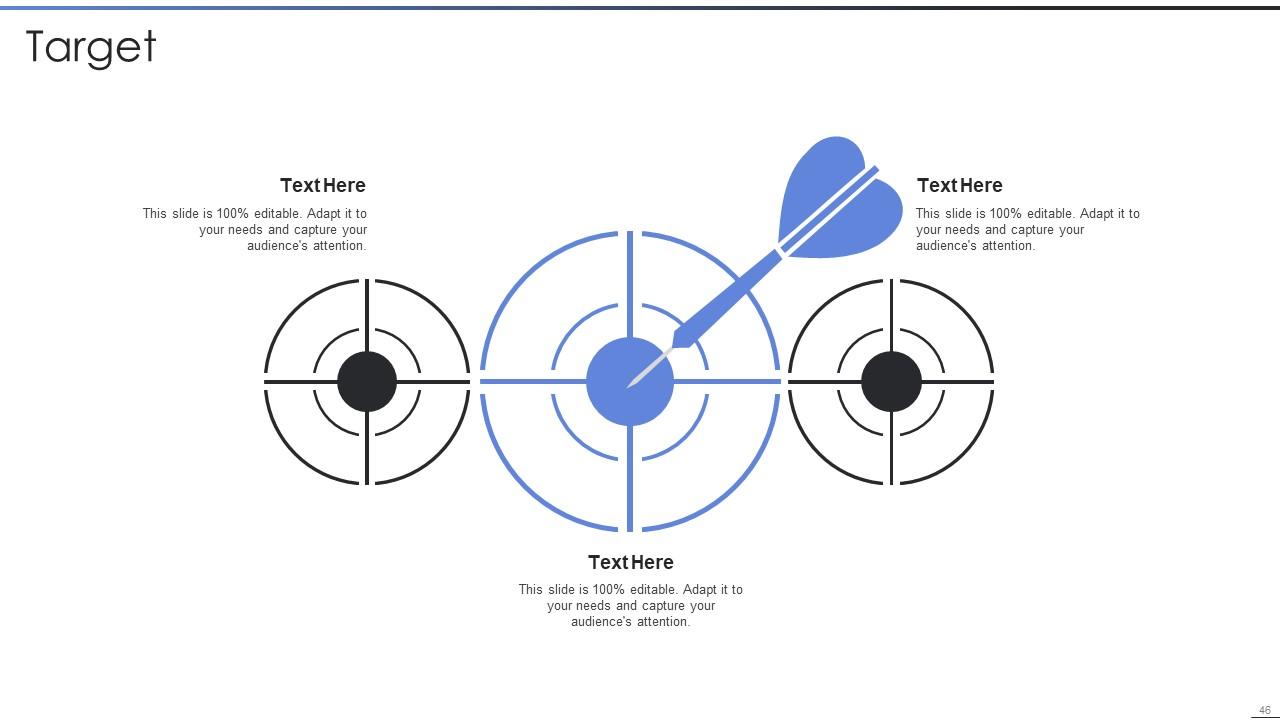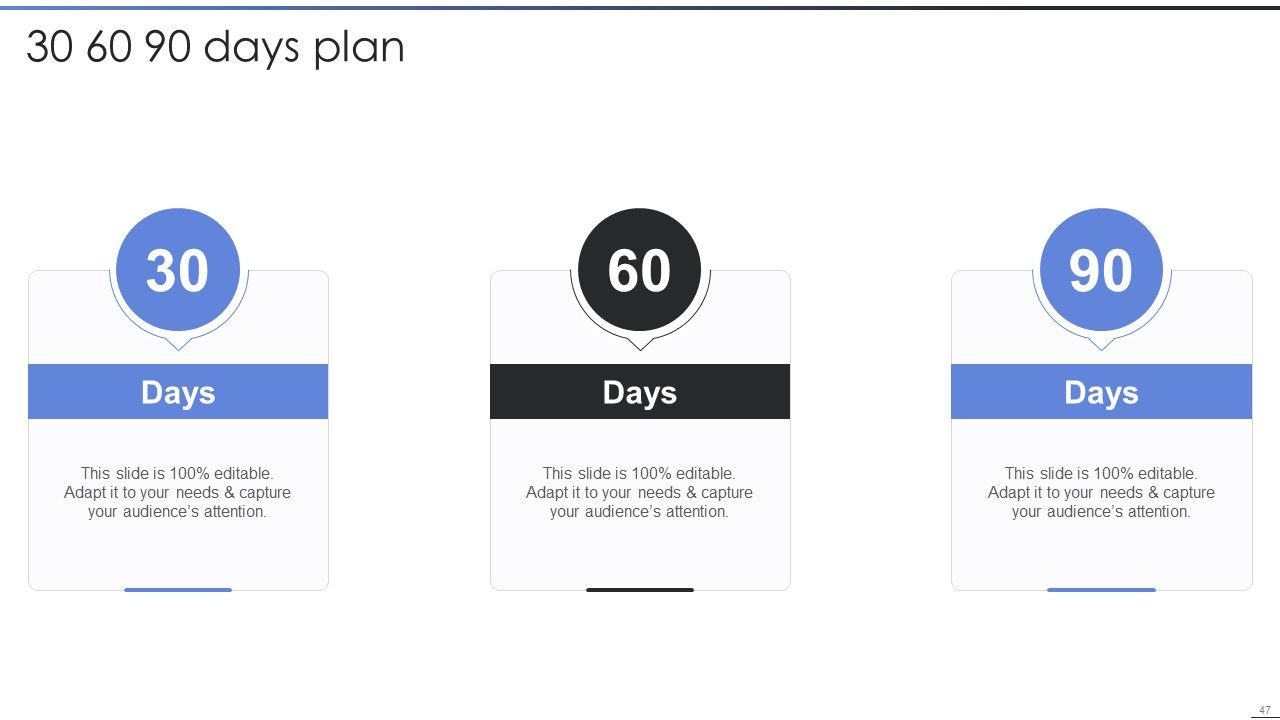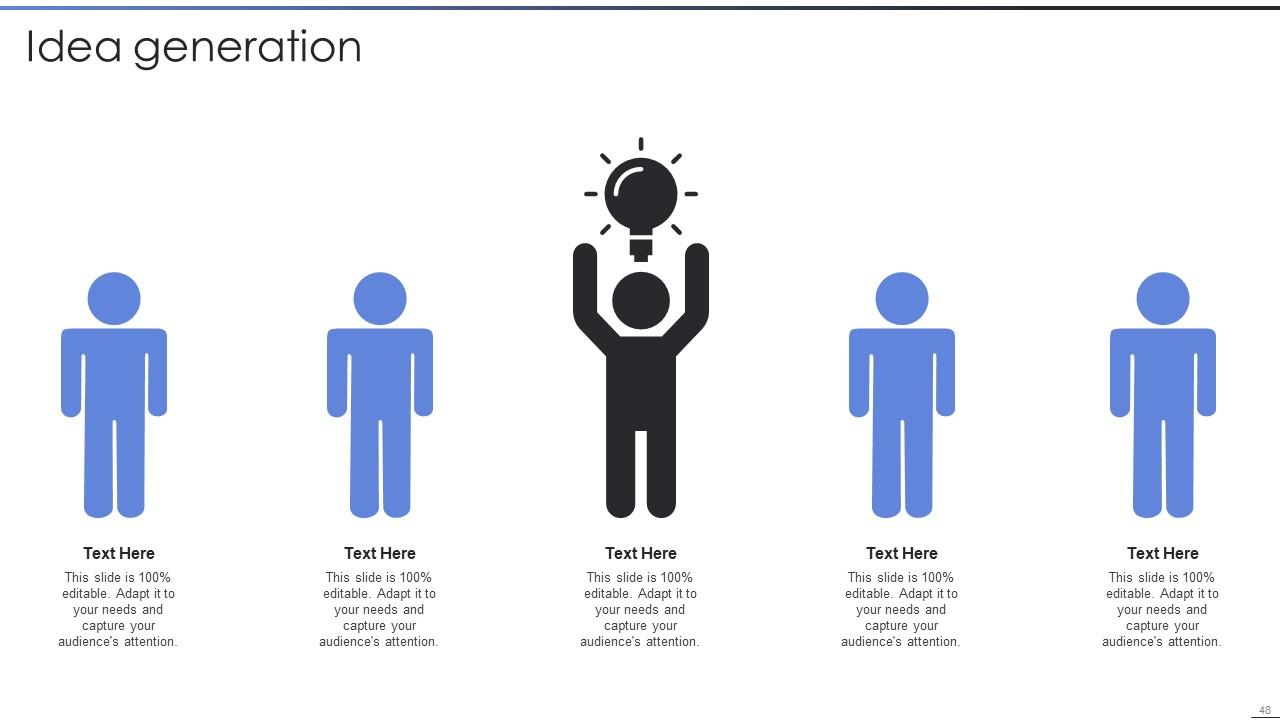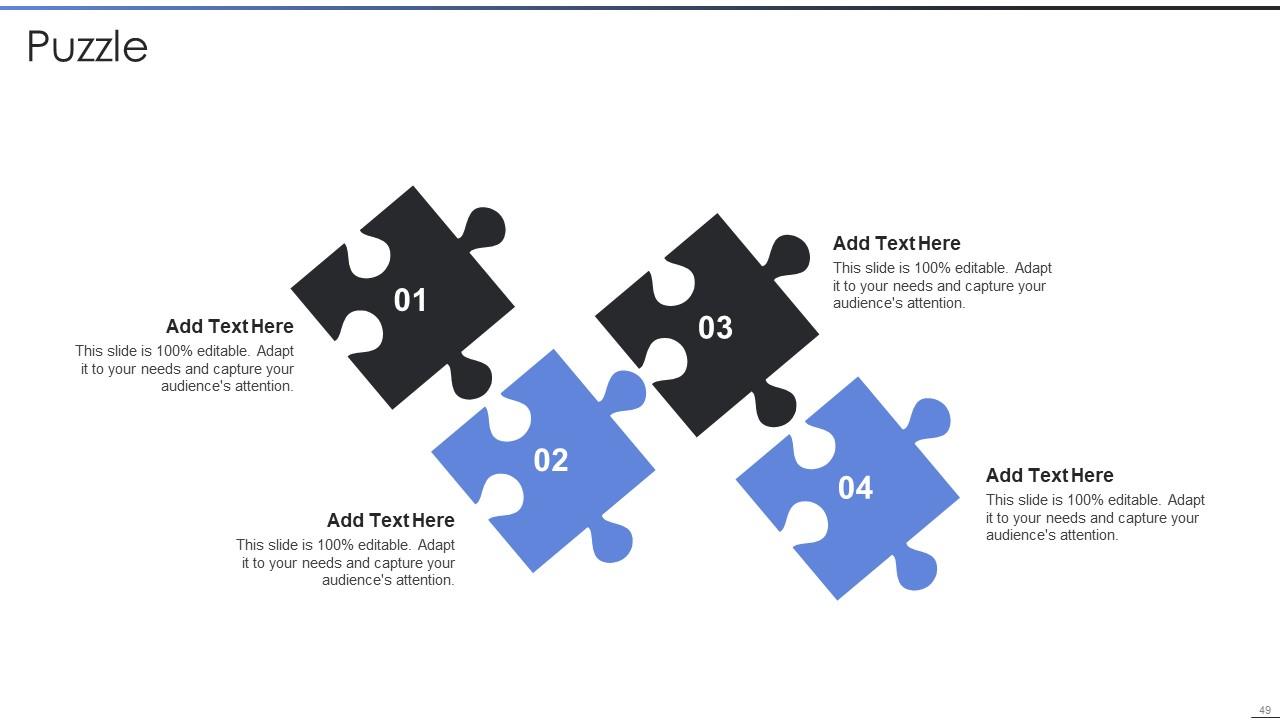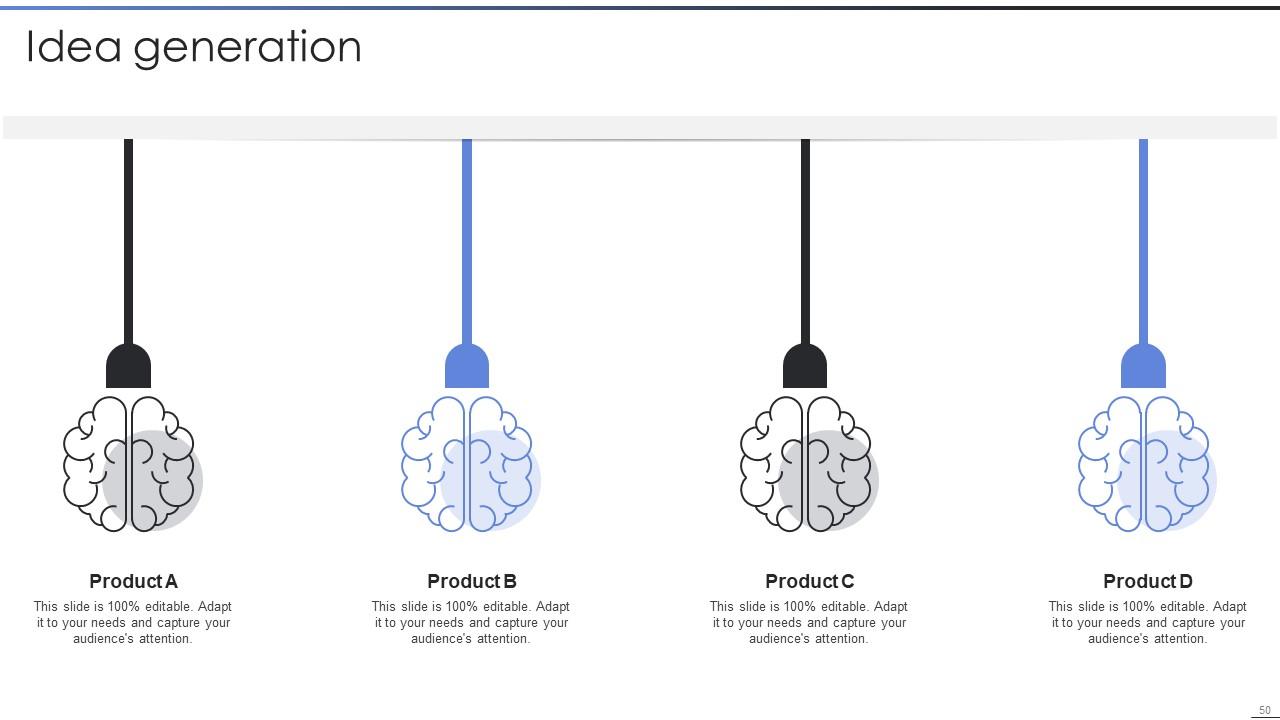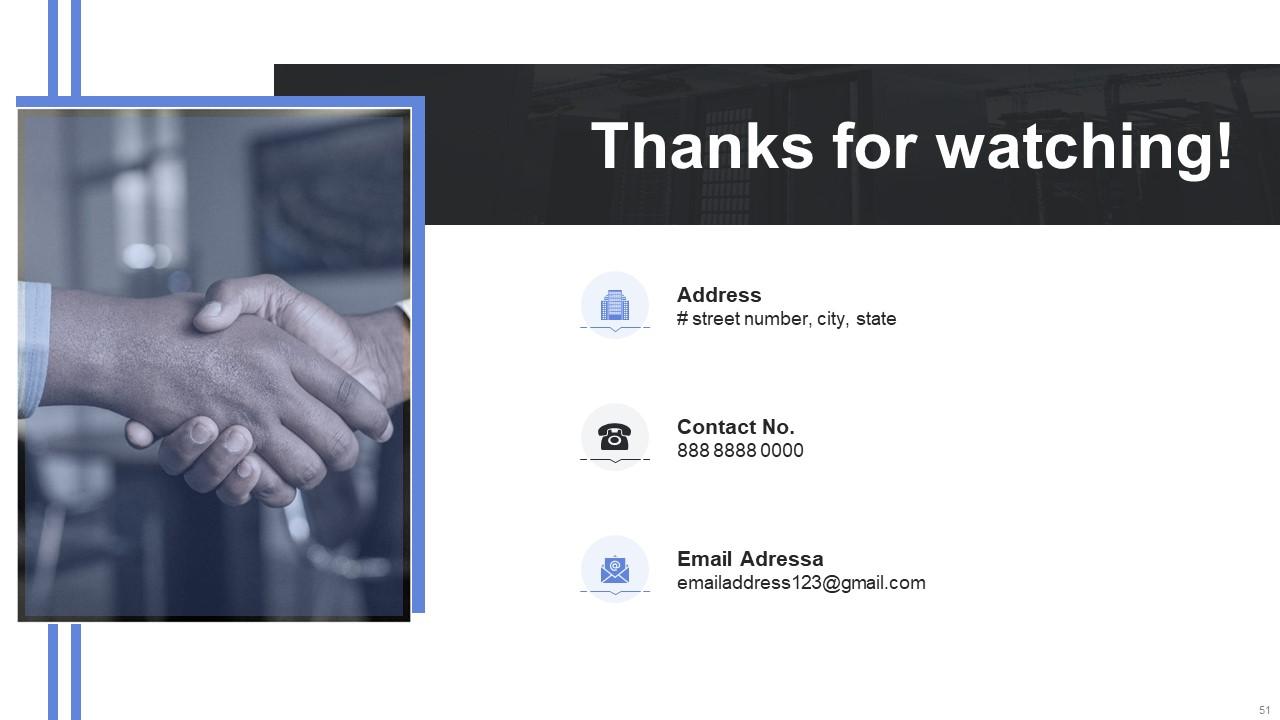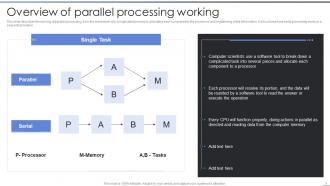Parallel Processing IT Powerpoint Presentation Slides
Parallel Processing gives a brief idea about parallel processing, its importance, how it is different from serial processing, its architecture, and various types. In this Parallel Processing PowerPoint, we have discussed the overview of parallel processing, fundamentals of parallel computer architecture, the importance of parallel processing, and business benefits. In addition, this Parallel Computing PPT contains a section architecture of parallel processing. Furthermore, this Parallel Processing template includes the different types of parallel processing. Moreover, this Parallel Computing PPT caters to the hardware supporting parallel processing. Lastly, this Parallel Processing deck comprises parallel processing applications in different sectors such as agriculture, science, research, etc. It also includes a timeline, a roadmap, and a dashboard. Download our 100 percent editable and customizable template, which is also compatible with Google Slides.
Parallel Processing gives a brief idea about parallel processing, its importance, how it is different from serial processin..
- Google Slides is a new FREE Presentation software from Google.
- All our content is 100% compatible with Google Slides.
- Just download our designs, and upload them to Google Slides and they will work automatically.
- Amaze your audience with SlideTeam and Google Slides.
-
Want Changes to This PPT Slide? Check out our Presentation Design Services
- WideScreen Aspect ratio is becoming a very popular format. When you download this product, the downloaded ZIP will contain this product in both standard and widescreen format.
-

- Some older products that we have may only be in standard format, but they can easily be converted to widescreen.
- To do this, please open the SlideTeam product in Powerpoint, and go to
- Design ( On the top bar) -> Page Setup -> and select "On-screen Show (16:9)” in the drop down for "Slides Sized for".
- The slide or theme will change to widescreen, and all graphics will adjust automatically. You can similarly convert our content to any other desired screen aspect ratio.
Compatible With Google Slides

Get This In WideScreen
You must be logged in to download this presentation.
PowerPoint presentation slides
Deliver an informational PPT on various topics by using this Parallel Processing IT Powerpoint Presentation Slides. This deck focuses and implements best industry practices, thus providing a birds-eye view of the topic. Encompassed with fifty one slides, designed using high-quality visuals and graphics, this deck is a complete package to use and download. All the slides offered in this deck are subjective to innumerable alterations, thus making you a pro at delivering and educating. You can modify the color of the graphics, background, or anything else as per your needs and requirements. It suits every business vertical because of its adaptable layout.
People who downloaded this PowerPoint presentation also viewed the following :
Content of this Powerpoint Presentation
Slide 1: This slide displays the title Parallel Processing (IT).
Slide 2: This slide displays the Agenda for parallel processing.
Slide 3: This slide exhibit table of content.
Slide 4: This slide exhibit table of content- Overview of Parallel Processing.
Slide 5: This slide represents the overview of parallel processing.
Slide 6: This slide shows the fundamentals of parallel computer architecture.
Slide 7: This slide depicts the critical features of parallel processing.
Slide 8: This slide describes the working of parallel processing.
Slide 9: This slide exhibit table of content- Importance of Parallel Processing.
Slide 10: This slide describes the importance of parallel processing in our daily lives and businesses.
Slide 11: This slide represents how businesses can take advantage of parallel processing by running complex code more efficiently.
Slide 12: This slide exhibit table of content- Difference between Serial and Parallel Processing.
Slide 13: This slide shows the comparison between serial and parallel processing based on different factors.
Slide 14: This slide exhibit table of content- Architecture of Parallel Processing.
Slide 15: This slide represents the symmetrical multiprocessing technique of parallel processing.
Slide 16: This slide represents the massively parallel processing architecture that has been optimized to be handled in parallel.
Slide 17: This slide describes the non-uniform memory architecture of parallel processing and components.
Slide 18: This slide exhibit table of content- Types of Parallel Processor System and Computing.
Slide 19: This slide represents the single instruction and single data stream type of parallel processing.
Slide 20: This slide depicts the single instruction and multiple data stream types of parallel processing and how tasks are performed in this.
Slide 21: This slide outlines another type of parallel processing that is MISD.
Slide 22: This slide illustrates the multiple instructions and multiple data streams.
Slide 23: This slide depicts the primary types of parallel computing from open-source and licensed suppliers.
Slide 24: This slide exhibit table of content- Hardware and OS Supporting Parallel Processing.
Slide 25: This slide describes the overview of bus-based intercommunication in parallel processing.
Slide 26: This slide represents the introduction to switched memory access, and a crossbar switch is installed to connect processors.
Slide 27: This slide depicts the overview of the hypercubes hardware structure for parallel processing, and every processor in this system is a whole computer.
Slide 28: This slide provides an overview of different operating systems for parallel processing.
Slide 29: This slide exhibit table of content- Applications of Parallel Processing.
Slide 30: This slide represents the application of parallel processing in science, research, and energy.
Slide 31: This slide represents the usage of multiprocessor computers in astronomy.
Slide 32: This slide depicts the usage of parallel processing systems in oil and gas industries.
Slide 33: This slide represents the application of parallel processing in the agriculture department.
Slide 34: This slide describes the application of parallel processing in the commercial world.
Slide 35: This slide exhibit table of content- Timeline for Parallel Processing Systems.
Slide 36: This slide describes the timeline for parallel processing systems.
Slide 37: This slide exhibit table of content- Roadmap for Parallel Processor Systems.
Slide 38: This slide shows the roadmap for parallel processor systems.
Slide 39: This slide exhibit table of content- Dashboard for Parallel Processing Systems.
Slide 40: This slide represents the dashboard for the parallel processing system.
Slide 41: This slide presents title for additional slides.
Slide 42: This is the icons slide.
Slide 43: This slide displays yearly bar graph for different products.
Slide 44: This slide depicts posts for past experiences of clients.
Slide 45: This slide displays Venn.
Slide 46: This slide displays Target
Slide 47: This slide depicts 30-60-90 days plan for projects.
Slide 48: This slide exhibits ideas generated.
Slide 49: This slide shows puzzle for displaying elements of company.
Slide 50: This slide exhibits ideas generated.
Slide 51: This is thank you slide & contains contact details of company like office address, phone no., etc.
Parallel Processing IT Powerpoint Presentation Slides with all 56 slides:
Use our Parallel Processing IT Powerpoint Presentation Slides to effectively help you save your valuable time. They are readymade to fit into any presentation structure.
FAQs
Parallel processing is a technique of executing multiple computational tasks simultaneously using multiple processors. The critical features of parallel processing include dividing a task into sub-tasks, assigning the sub-tasks to multiple processors, and combining the results obtained from different processors.
Serial processing involves executing a task one after another using a single processor, while parallel processing divides the task into sub-tasks and executes them simultaneously using multiple processors. Parallel processing is faster than serial processing because it can complete a task in a shorter time.
There are four types of parallel processor systems and computing: Single Instruction and Single Data Stream (SISD), Single Instruction and Multiple Data Streams (SIMD), Multiple Instruction and Single Data Stream (MISD), and Multiple Instruction and Multiple Data Streams (MIMD).
The architecture of parallel processing includes Symmetrical Multiprocessing (SMP), Massively Parallel Processing (MPP), and Non-Uniform Memory Architecture (NUMA). Parallel processing works by dividing a task into sub-tasks and assigning them to different processors. The processors execute the sub-tasks simultaneously and combine the results obtained to complete the task.
Parallel processing finds applications in various fields, including science, research, energy, astronomy, oil and gas industries, agriculture, and commercial industries. It is used to run complex simulations, process large datasets, and perform other computationally intensive tasks quickly and efficiently.
-
“Slides are formally built and the color theme is also very exciting. This went perfectly with my needs and saved a good amount of time.”
-
Definitely a time saver! Predesigned and easy-to-use templates just helped me put together an amazing presentation.


